Quick filters:
Deshret Stock Photos and Images
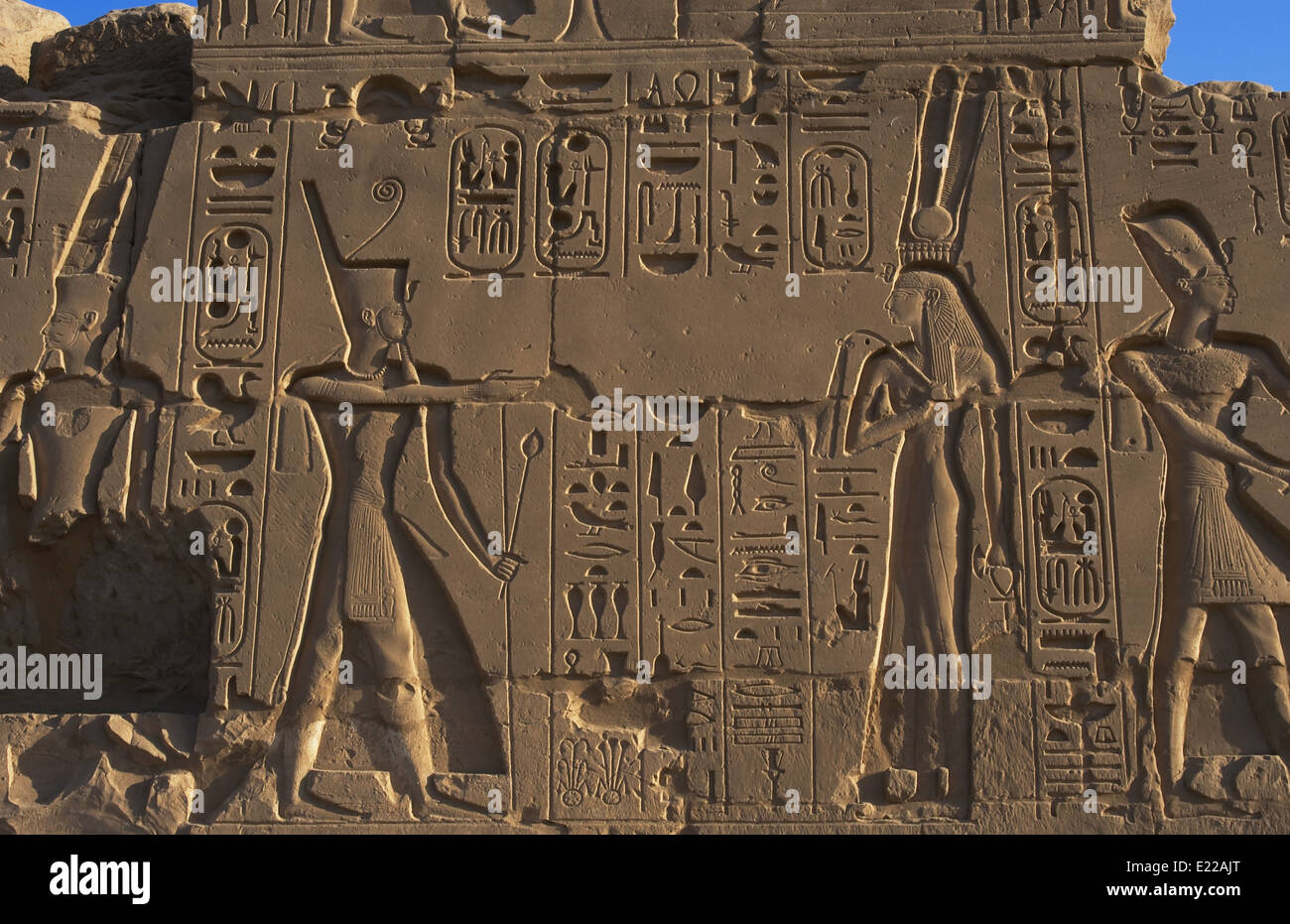 Egyptian Art. The Karnak Temple Complex. Relief depicting a pharaoh, wearing the Deshret or Red Corwn, before a god. Stock Photohttps://www.alamy.com/image-license-details/?v=1https://www.alamy.com/stock-photo-egyptian-art-the-karnak-temple-complex-relief-depicting-a-pharaoh-70123056.html
Egyptian Art. The Karnak Temple Complex. Relief depicting a pharaoh, wearing the Deshret or Red Corwn, before a god. Stock Photohttps://www.alamy.com/image-license-details/?v=1https://www.alamy.com/stock-photo-egyptian-art-the-karnak-temple-complex-relief-depicting-a-pharaoh-70123056.htmlRME22AJT–Egyptian Art. The Karnak Temple Complex. Relief depicting a pharaoh, wearing the Deshret or Red Corwn, before a god.
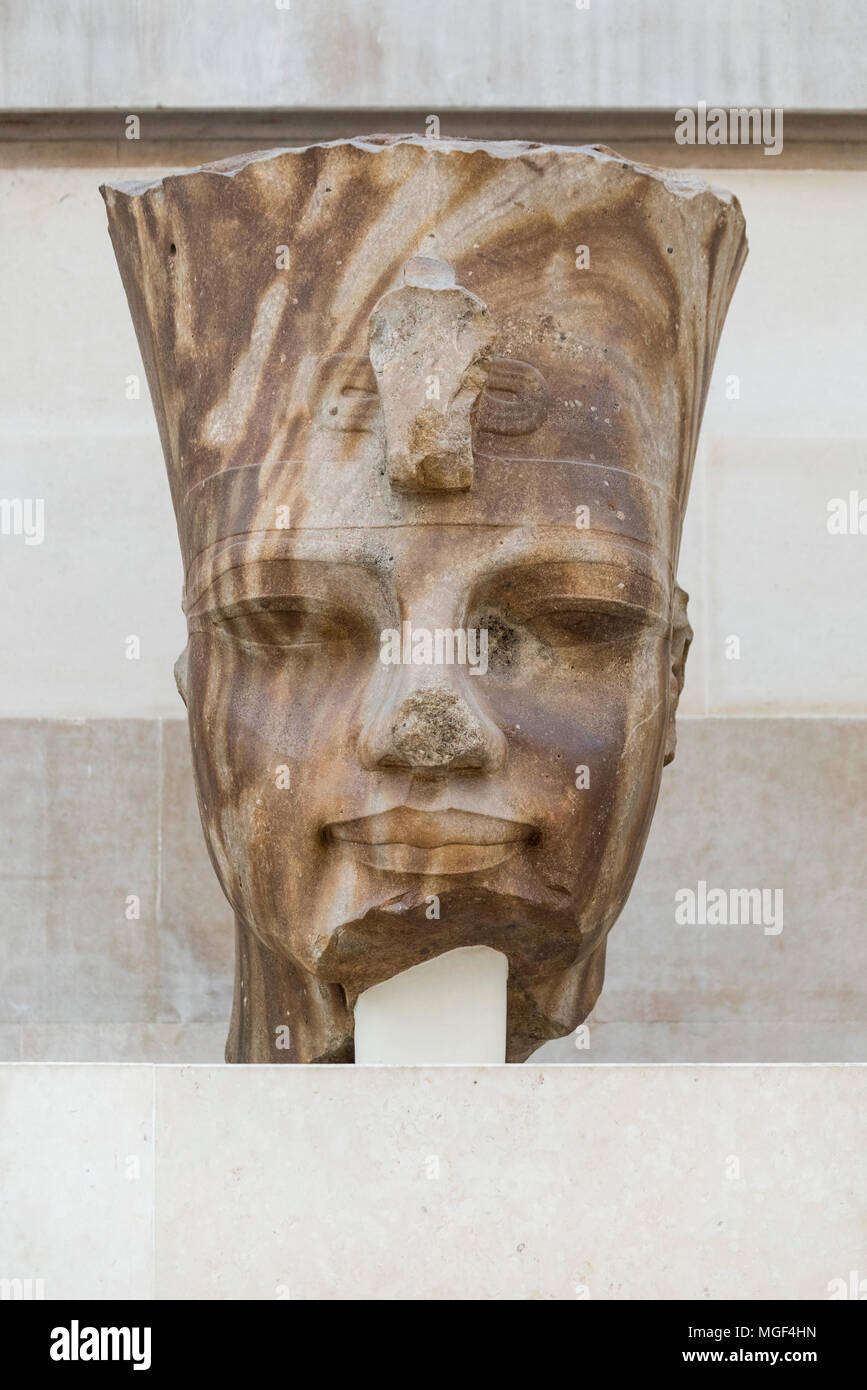 London. England. British Museum. Quartzite head of Egyptian Pharaoh Amenhotep III wearing the Red Crown of Lower Egypt (Deshret) with uraeus Stock Photohttps://www.alamy.com/image-license-details/?v=1https://www.alamy.com/london-england-british-museum-quartzite-head-of-egyptian-pharaoh-amenhotep-iii-wearing-the-red-crown-of-lower-egypt-deshret-with-uraeus-image182271089.html
London. England. British Museum. Quartzite head of Egyptian Pharaoh Amenhotep III wearing the Red Crown of Lower Egypt (Deshret) with uraeus Stock Photohttps://www.alamy.com/image-license-details/?v=1https://www.alamy.com/london-england-british-museum-quartzite-head-of-egyptian-pharaoh-amenhotep-iii-wearing-the-red-crown-of-lower-egypt-deshret-with-uraeus-image182271089.htmlRMMGF4HN–London. England. British Museum. Quartzite head of Egyptian Pharaoh Amenhotep III wearing the Red Crown of Lower Egypt (Deshret) with uraeus
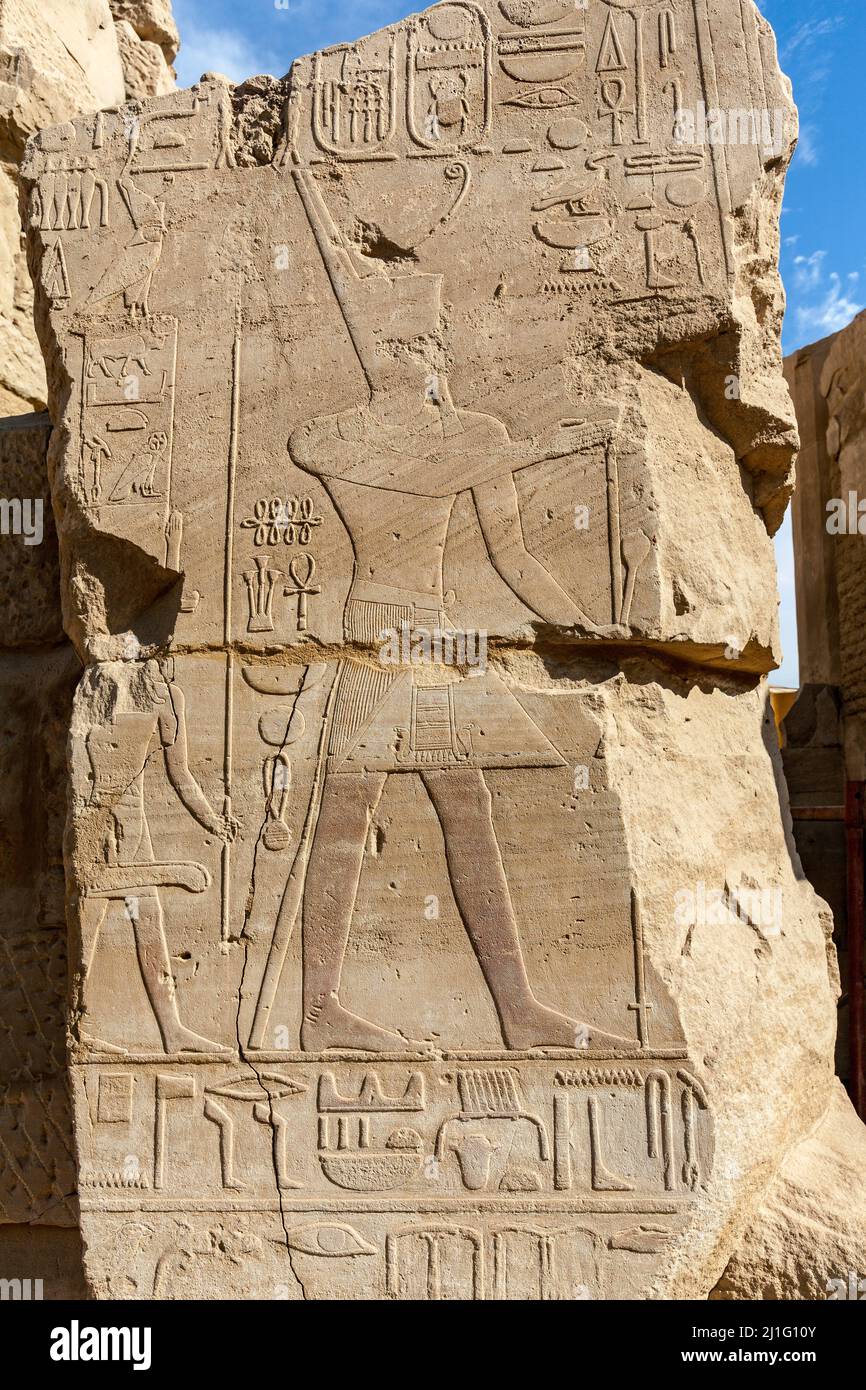 Bas-relief of pharaoh wearing the deshret, or red crown, making an offering to a deity, Temple of Karnak, Luxor Stock Photohttps://www.alamy.com/image-license-details/?v=1https://www.alamy.com/bas-relief-of-pharaoh-wearing-the-deshret-or-red-crown-making-an-offering-to-a-deity-temple-of-karnak-luxor-image465646635.html
Bas-relief of pharaoh wearing the deshret, or red crown, making an offering to a deity, Temple of Karnak, Luxor Stock Photohttps://www.alamy.com/image-license-details/?v=1https://www.alamy.com/bas-relief-of-pharaoh-wearing-the-deshret-or-red-crown-making-an-offering-to-a-deity-temple-of-karnak-luxor-image465646635.htmlRM2J1G10Y–Bas-relief of pharaoh wearing the deshret, or red crown, making an offering to a deity, Temple of Karnak, Luxor
 The Crown worn by the pharoah had special significance. The Red Crown, deshret, of Lower Egypt Stock Photohttps://www.alamy.com/image-license-details/?v=1https://www.alamy.com/the-crown-worn-by-the-pharoah-had-special-significance-the-red-crown-deshret-of-lower-egypt-image428892694.html
The Crown worn by the pharoah had special significance. The Red Crown, deshret, of Lower Egypt Stock Photohttps://www.alamy.com/image-license-details/?v=1https://www.alamy.com/the-crown-worn-by-the-pharoah-had-special-significance-the-red-crown-deshret-of-lower-egypt-image428892694.htmlRF2FWNN06–The Crown worn by the pharoah had special significance. The Red Crown, deshret, of Lower Egypt
 Doorway with painted relief, depicting two pharaohs; one on the left is wearing the hedjet or White Crown for Upper Egypt. The one on the right wears the deshret or Red Crown for Lower Egypt. Temple of Hatshepsut, near Luxor, Egypt. The mortuary temple and tomb dates to the Eighteenth dynasty, and was designed by Senenmut, royal steward and architect of Hatshepsut. It was constructed during the 15th century BC, During the Eighteenth dynasty Stock Photohttps://www.alamy.com/image-license-details/?v=1https://www.alamy.com/doorway-with-painted-relief-depicting-two-pharaohs-one-on-the-left-is-wearing-the-hedjet-or-white-crown-for-upper-egypt-the-one-on-the-right-wears-the-deshret-or-red-crown-for-lower-egypt-temple-of-hatshepsut-near-luxor-egypt-the-mortuary-temple-and-tomb-dates-to-the-eighteenth-dynasty-and-was-designed-by-senenmut-royal-steward-and-architect-of-hatshepsut-it-was-constructed-during-the-15th-century-bc-during-the-eighteenth-dynasty-image328340127.html
Doorway with painted relief, depicting two pharaohs; one on the left is wearing the hedjet or White Crown for Upper Egypt. The one on the right wears the deshret or Red Crown for Lower Egypt. Temple of Hatshepsut, near Luxor, Egypt. The mortuary temple and tomb dates to the Eighteenth dynasty, and was designed by Senenmut, royal steward and architect of Hatshepsut. It was constructed during the 15th century BC, During the Eighteenth dynasty Stock Photohttps://www.alamy.com/image-license-details/?v=1https://www.alamy.com/doorway-with-painted-relief-depicting-two-pharaohs-one-on-the-left-is-wearing-the-hedjet-or-white-crown-for-upper-egypt-the-one-on-the-right-wears-the-deshret-or-red-crown-for-lower-egypt-temple-of-hatshepsut-near-luxor-egypt-the-mortuary-temple-and-tomb-dates-to-the-eighteenth-dynasty-and-was-designed-by-senenmut-royal-steward-and-architect-of-hatshepsut-it-was-constructed-during-the-15th-century-bc-during-the-eighteenth-dynasty-image328340127.htmlRM2A25553–Doorway with painted relief, depicting two pharaohs; one on the left is wearing the hedjet or White Crown for Upper Egypt. The one on the right wears the deshret or Red Crown for Lower Egypt. Temple of Hatshepsut, near Luxor, Egypt. The mortuary temple and tomb dates to the Eighteenth dynasty, and was designed by Senenmut, royal steward and architect of Hatshepsut. It was constructed during the 15th century BC, During the Eighteenth dynasty
 Egyptian Art. The Karnak Temple Complex. Relief depicting a pharaoh, wearing the Deshret or Red Corwn, before a god. New Kingdom. Egypt. Stock Photohttps://www.alamy.com/image-license-details/?v=1https://www.alamy.com/egyptian-art-the-karnak-temple-complex-relief-depicting-a-pharaoh-wearing-the-deshret-or-red-corwn-before-a-god-new-kingdom-egypt-image209679965.html
Egyptian Art. The Karnak Temple Complex. Relief depicting a pharaoh, wearing the Deshret or Red Corwn, before a god. New Kingdom. Egypt. Stock Photohttps://www.alamy.com/image-license-details/?v=1https://www.alamy.com/egyptian-art-the-karnak-temple-complex-relief-depicting-a-pharaoh-wearing-the-deshret-or-red-corwn-before-a-god-new-kingdom-egypt-image209679965.htmlRMP53MX5–Egyptian Art. The Karnak Temple Complex. Relief depicting a pharaoh, wearing the Deshret or Red Corwn, before a god. New Kingdom. Egypt.
 Doorway with painted relief, depicting two pharaohs; one on the left is wearing the hedjet or White Crown for Upper Egypt. The one on the right wears the deshret or Red Crown for Lower Egypt. Temple of Hatshepsut, near Luxor, Egypt. The mortuary temple and tomb dates to the Eighteenth dynasty, and was designed by Senenmut, royal steward and architect of Hatshepsut. It was constructed during the 15th century BC, During the Eighteenth dynasty Stock Photohttps://www.alamy.com/image-license-details/?v=1https://www.alamy.com/doorway-with-painted-relief-depicting-two-pharaohs-one-on-the-left-is-wearing-the-hedjet-or-white-crown-for-upper-egypt-the-one-on-the-right-wears-the-deshret-or-red-crown-for-lower-egypt-temple-of-hatshepsut-near-luxor-egypt-the-mortuary-temple-and-tomb-dates-to-the-eighteenth-dynasty-and-was-designed-by-senenmut-royal-steward-and-architect-of-hatshepsut-it-was-constructed-during-the-15th-century-bc-during-the-eighteenth-dynasty-image328340134.html
Doorway with painted relief, depicting two pharaohs; one on the left is wearing the hedjet or White Crown for Upper Egypt. The one on the right wears the deshret or Red Crown for Lower Egypt. Temple of Hatshepsut, near Luxor, Egypt. The mortuary temple and tomb dates to the Eighteenth dynasty, and was designed by Senenmut, royal steward and architect of Hatshepsut. It was constructed during the 15th century BC, During the Eighteenth dynasty Stock Photohttps://www.alamy.com/image-license-details/?v=1https://www.alamy.com/doorway-with-painted-relief-depicting-two-pharaohs-one-on-the-left-is-wearing-the-hedjet-or-white-crown-for-upper-egypt-the-one-on-the-right-wears-the-deshret-or-red-crown-for-lower-egypt-temple-of-hatshepsut-near-luxor-egypt-the-mortuary-temple-and-tomb-dates-to-the-eighteenth-dynasty-and-was-designed-by-senenmut-royal-steward-and-architect-of-hatshepsut-it-was-constructed-during-the-15th-century-bc-during-the-eighteenth-dynasty-image328340134.htmlRM2A2555A–Doorway with painted relief, depicting two pharaohs; one on the left is wearing the hedjet or White Crown for Upper Egypt. The one on the right wears the deshret or Red Crown for Lower Egypt. Temple of Hatshepsut, near Luxor, Egypt. The mortuary temple and tomb dates to the Eighteenth dynasty, and was designed by Senenmut, royal steward and architect of Hatshepsut. It was constructed during the 15th century BC, During the Eighteenth dynasty
 Art inspired by Amulet of a crown of Lower Egypt, Late Period–Ptolemaic Period, 664–30 BC, From Egypt, Faience, H. 1.8 × W. 1.1 × T. 0.6 cm (11/16 × 7/16 × 1/4 in.), This amulet takes the form of the crown of Lower Egypt, the northern part of the country. Called deshret by the ancient, Classic works modernized by Artotop with a splash of modernity. Shapes, color and value, eye-catching visual impact on art. Emotions through freedom of artworks in a contemporary way. A timeless message pursuing a wildly creative new direction. Artists turning to the digital medium and creating the Artotop NFT Stock Photohttps://www.alamy.com/image-license-details/?v=1https://www.alamy.com/art-inspired-by-amulet-of-a-crown-of-lower-egypt-late-periodptolemaic-period-66430-bc-from-egypt-faience-h-18-w-11-t-06-cm-1116-716-14-in-this-amulet-takes-the-form-of-the-crown-of-lower-egypt-the-northern-part-of-the-country-called-deshret-by-the-ancient-classic-works-modernized-by-artotop-with-a-splash-of-modernity-shapes-color-and-value-eye-catching-visual-impact-on-art-emotions-through-freedom-of-artworks-in-a-contemporary-way-a-timeless-message-pursuing-a-wildly-creative-new-direction-artists-turning-to-the-digital-medium-and-creating-the-artotop-nft-image462862620.html
Art inspired by Amulet of a crown of Lower Egypt, Late Period–Ptolemaic Period, 664–30 BC, From Egypt, Faience, H. 1.8 × W. 1.1 × T. 0.6 cm (11/16 × 7/16 × 1/4 in.), This amulet takes the form of the crown of Lower Egypt, the northern part of the country. Called deshret by the ancient, Classic works modernized by Artotop with a splash of modernity. Shapes, color and value, eye-catching visual impact on art. Emotions through freedom of artworks in a contemporary way. A timeless message pursuing a wildly creative new direction. Artists turning to the digital medium and creating the Artotop NFT Stock Photohttps://www.alamy.com/image-license-details/?v=1https://www.alamy.com/art-inspired-by-amulet-of-a-crown-of-lower-egypt-late-periodptolemaic-period-66430-bc-from-egypt-faience-h-18-w-11-t-06-cm-1116-716-14-in-this-amulet-takes-the-form-of-the-crown-of-lower-egypt-the-northern-part-of-the-country-called-deshret-by-the-ancient-classic-works-modernized-by-artotop-with-a-splash-of-modernity-shapes-color-and-value-eye-catching-visual-impact-on-art-emotions-through-freedom-of-artworks-in-a-contemporary-way-a-timeless-message-pursuing-a-wildly-creative-new-direction-artists-turning-to-the-digital-medium-and-creating-the-artotop-nft-image462862620.htmlRF2HW15YT–Art inspired by Amulet of a crown of Lower Egypt, Late Period–Ptolemaic Period, 664–30 BC, From Egypt, Faience, H. 1.8 × W. 1.1 × T. 0.6 cm (11/16 × 7/16 × 1/4 in.), This amulet takes the form of the crown of Lower Egypt, the northern part of the country. Called deshret by the ancient, Classic works modernized by Artotop with a splash of modernity. Shapes, color and value, eye-catching visual impact on art. Emotions through freedom of artworks in a contemporary way. A timeless message pursuing a wildly creative new direction. Artists turning to the digital medium and creating the Artotop NFT
 Amulet of a crown of Lower Egypt 664–30 BC Late Period–Ptolemaic Period This amulet takes the form of the crown of Lower Egypt, the northern part of the country. Called deshret by the ancient Egyptians, It is a cylindrical headpiece with a tall spike at the back and a long sprial in front. It has been nicknamed the 'red crown,' since many depictions in art are colored red. However, amuletic versions are most often green, like this example.. Amulet of a crown of Lower Egypt. 664–30 BC. Faience. Late Period–Ptolemaic Period. From Egypt Stock Photohttps://www.alamy.com/image-license-details/?v=1https://www.alamy.com/amulet-of-a-crown-of-lower-egypt-66430-bc-late-periodptolemaic-period-this-amulet-takes-the-form-of-the-crown-of-lower-egypt-the-northern-part-of-the-country-called-deshret-by-the-ancient-egyptians-it-is-a-cylindrical-headpiece-with-a-tall-spike-at-the-back-and-a-long-sprial-in-front-it-has-been-nicknamed-the-red-crown-since-many-depictions-in-art-are-colored-red-however-amuletic-versions-are-most-often-green-like-this-example-amulet-of-a-crown-of-lower-egypt-66430-bc-faience-late-periodptolemaic-period-from-egypt-image457830796.html
Amulet of a crown of Lower Egypt 664–30 BC Late Period–Ptolemaic Period This amulet takes the form of the crown of Lower Egypt, the northern part of the country. Called deshret by the ancient Egyptians, It is a cylindrical headpiece with a tall spike at the back and a long sprial in front. It has been nicknamed the 'red crown,' since many depictions in art are colored red. However, amuletic versions are most often green, like this example.. Amulet of a crown of Lower Egypt. 664–30 BC. Faience. Late Period–Ptolemaic Period. From Egypt Stock Photohttps://www.alamy.com/image-license-details/?v=1https://www.alamy.com/amulet-of-a-crown-of-lower-egypt-66430-bc-late-periodptolemaic-period-this-amulet-takes-the-form-of-the-crown-of-lower-egypt-the-northern-part-of-the-country-called-deshret-by-the-ancient-egyptians-it-is-a-cylindrical-headpiece-with-a-tall-spike-at-the-back-and-a-long-sprial-in-front-it-has-been-nicknamed-the-red-crown-since-many-depictions-in-art-are-colored-red-however-amuletic-versions-are-most-often-green-like-this-example-amulet-of-a-crown-of-lower-egypt-66430-bc-faience-late-periodptolemaic-period-from-egypt-image457830796.htmlRM2HGRYRT–Amulet of a crown of Lower Egypt 664–30 BC Late Period–Ptolemaic Period This amulet takes the form of the crown of Lower Egypt, the northern part of the country. Called deshret by the ancient Egyptians, It is a cylindrical headpiece with a tall spike at the back and a long sprial in front. It has been nicknamed the 'red crown,' since many depictions in art are colored red. However, amuletic versions are most often green, like this example.. Amulet of a crown of Lower Egypt. 664–30 BC. Faience. Late Period–Ptolemaic Period. From Egypt
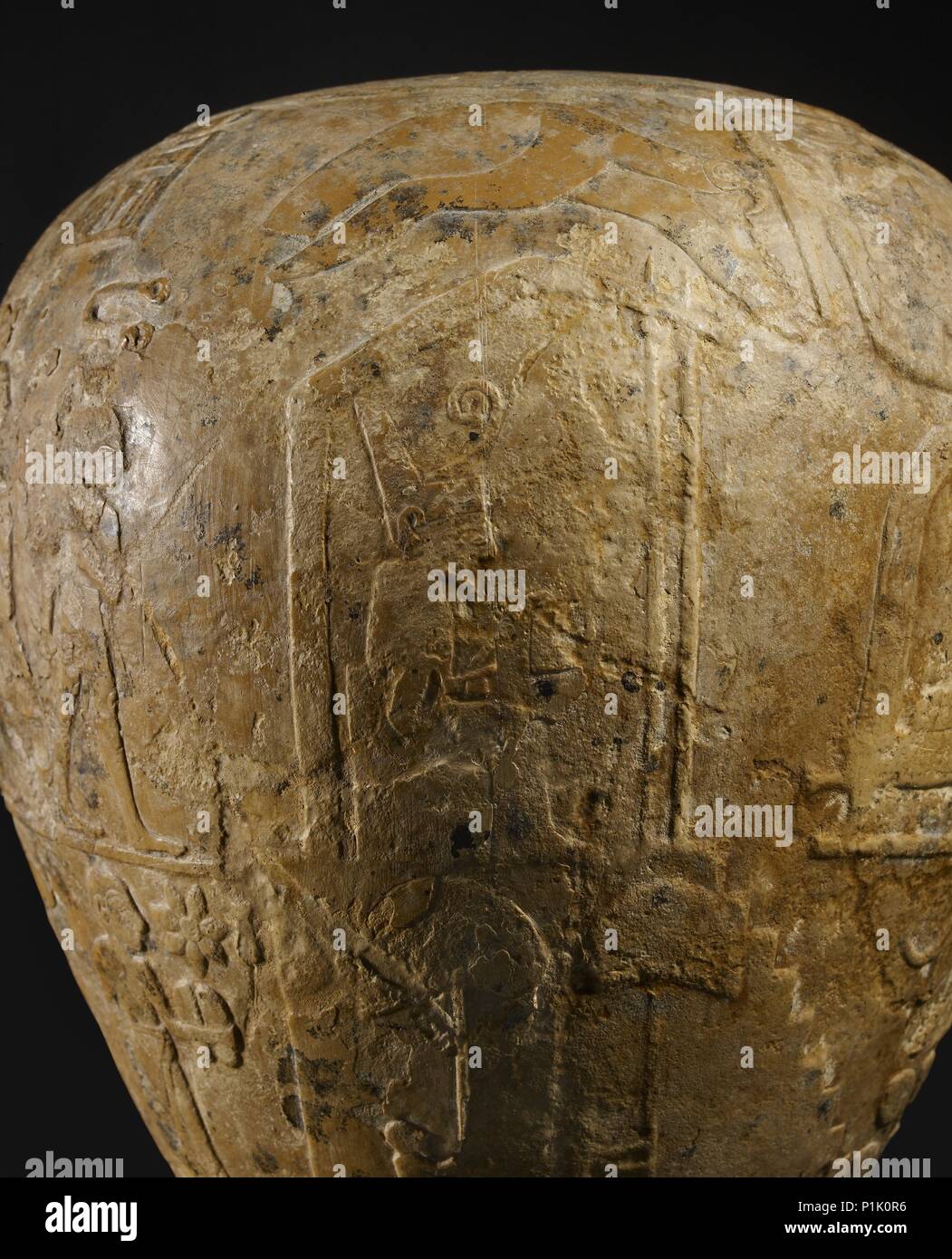 Macehead of Narmer, Protodynastic Period (Egypt), c3300 - c3200 BC. Artist: Unknown. Stock Photohttps://www.alamy.com/image-license-details/?v=1https://www.alamy.com/macehead-of-narmer-protodynastic-period-egypt-c3300-c3200-bc-artist-unknown-image207556810.html
Macehead of Narmer, Protodynastic Period (Egypt), c3300 - c3200 BC. Artist: Unknown. Stock Photohttps://www.alamy.com/image-license-details/?v=1https://www.alamy.com/macehead-of-narmer-protodynastic-period-egypt-c3300-c3200-bc-artist-unknown-image207556810.htmlRMP1K0R6–Macehead of Narmer, Protodynastic Period (Egypt), c3300 - c3200 BC. Artist: Unknown.
 Egypt, Cairo,Tutankhamon jewellery : Counterweight of a pectoral, in the shape of a pylon. Stock Photohttps://www.alamy.com/image-license-details/?v=1https://www.alamy.com/egypt-cairotutankhamon-jewellery-counterweight-of-a-pectoral-in-the-shape-of-a-pylon-image401154748.html
Egypt, Cairo,Tutankhamon jewellery : Counterweight of a pectoral, in the shape of a pylon. Stock Photohttps://www.alamy.com/image-license-details/?v=1https://www.alamy.com/egypt-cairotutankhamon-jewellery-counterweight-of-a-pectoral-in-the-shape-of-a-pylon-image401154748.htmlRM2E8J4Y8–Egypt, Cairo,Tutankhamon jewellery : Counterweight of a pectoral, in the shape of a pylon.
 Amulet of a crown of Lower Egypt, Late Period–Ptolemaic Period, 664–30 BC, From Egypt, Faience, H. 1.8 × W. 1.1 × T. 0.6 cm (11 Stock Photohttps://www.alamy.com/image-license-details/?v=1https://www.alamy.com/stock-image-amulet-of-a-crown-of-lower-egypt-late-periodptolemaic-period-66430-162446952.html
Amulet of a crown of Lower Egypt, Late Period–Ptolemaic Period, 664–30 BC, From Egypt, Faience, H. 1.8 × W. 1.1 × T. 0.6 cm (11 Stock Photohttps://www.alamy.com/image-license-details/?v=1https://www.alamy.com/stock-image-amulet-of-a-crown-of-lower-egypt-late-periodptolemaic-period-66430-162446952.htmlRMKC82MT–Amulet of a crown of Lower Egypt, Late Period–Ptolemaic Period, 664–30 BC, From Egypt, Faience, H. 1.8 × W. 1.1 × T. 0.6 cm (11
 Luxor in Egypt, Karnak site, temple of Opet. The king, wearing a white crown, bracelets and a collar, offers small vases to Amonet and Isis the Great. Stock Photohttps://www.alamy.com/image-license-details/?v=1https://www.alamy.com/luxor-in-egypt-karnak-site-temple-of-opet-the-king-wearing-a-white-crown-bracelets-and-a-collar-offers-small-vases-to-amonet-and-isis-the-great-image337860574.html
Luxor in Egypt, Karnak site, temple of Opet. The king, wearing a white crown, bracelets and a collar, offers small vases to Amonet and Isis the Great. Stock Photohttps://www.alamy.com/image-license-details/?v=1https://www.alamy.com/luxor-in-egypt-karnak-site-temple-of-opet-the-king-wearing-a-white-crown-bracelets-and-a-collar-offers-small-vases-to-amonet-and-isis-the-great-image337860574.htmlRM2AHJTH2–Luxor in Egypt, Karnak site, temple of Opet. The king, wearing a white crown, bracelets and a collar, offers small vases to Amonet and Isis the Great.
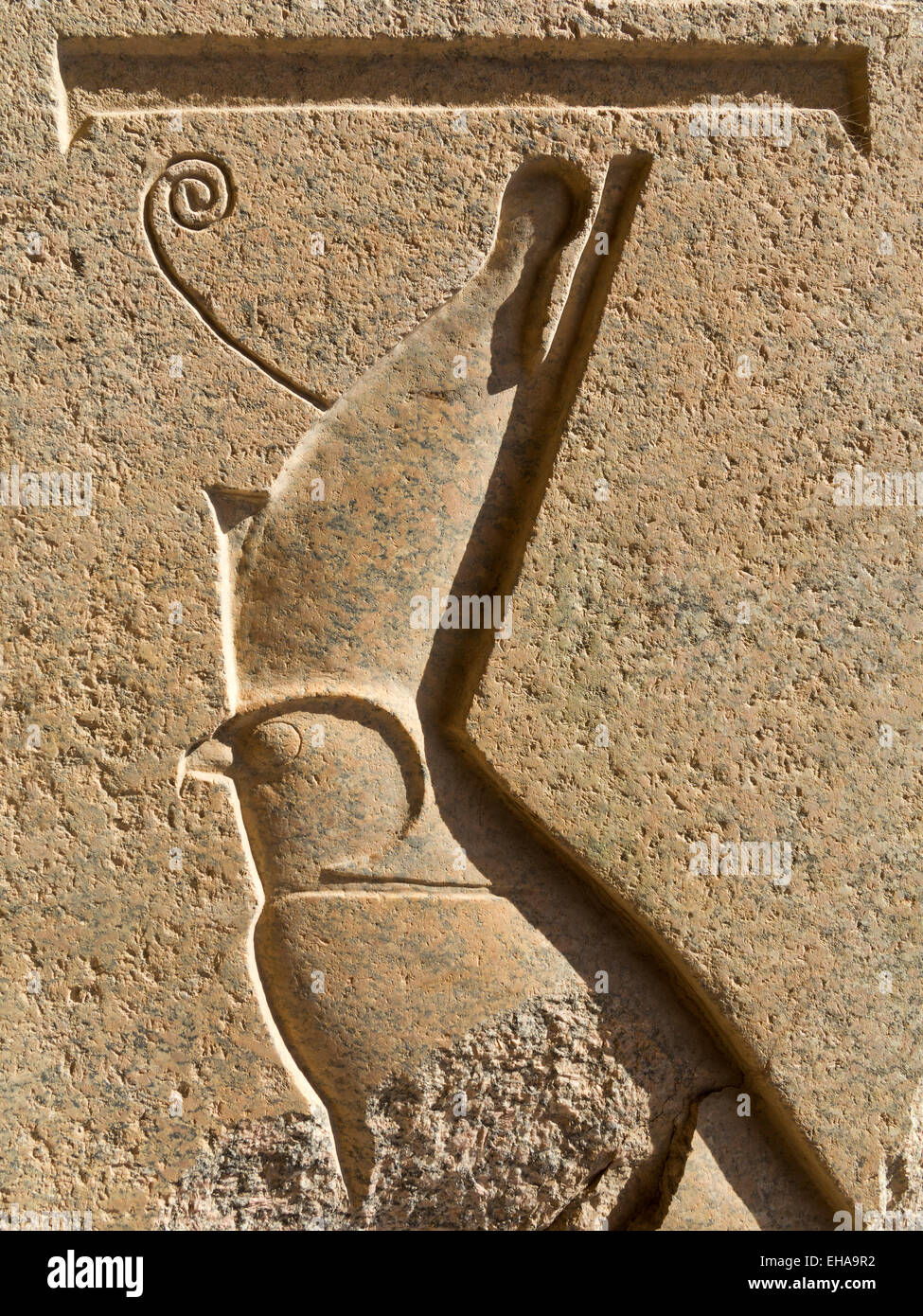 Close up of Horus wearing the double crown of ancient Egypt in a relief in Karnak temple Luxor, Upper Egypt Stock Photohttps://www.alamy.com/image-license-details/?v=1https://www.alamy.com/stock-photo-close-up-of-horus-wearing-the-double-crown-of-ancient-egypt-in-a-relief-79517846.html
Close up of Horus wearing the double crown of ancient Egypt in a relief in Karnak temple Luxor, Upper Egypt Stock Photohttps://www.alamy.com/image-license-details/?v=1https://www.alamy.com/stock-photo-close-up-of-horus-wearing-the-double-crown-of-ancient-egypt-in-a-relief-79517846.htmlRFEHA9R2–Close up of Horus wearing the double crown of ancient Egypt in a relief in Karnak temple Luxor, Upper Egypt
 Cairo, Egyptian Museum, silver pendant showing a winged snake goddess. It's a part of a pair : Goddesses of Upper Egypt and Lower Egypt. Stock Photohttps://www.alamy.com/image-license-details/?v=1https://www.alamy.com/cairo-egyptian-museum-silver-pendant-showing-a-winged-snake-goddess-its-a-part-of-a-pair-goddesses-of-upper-egypt-and-lower-egypt-image367976864.html
Cairo, Egyptian Museum, silver pendant showing a winged snake goddess. It's a part of a pair : Goddesses of Upper Egypt and Lower Egypt. Stock Photohttps://www.alamy.com/image-license-details/?v=1https://www.alamy.com/cairo-egyptian-museum-silver-pendant-showing-a-winged-snake-goddess-its-a-part-of-a-pair-goddesses-of-upper-egypt-and-lower-egypt-image367976864.htmlRM2CAJP6T–Cairo, Egyptian Museum, silver pendant showing a winged snake goddess. It's a part of a pair : Goddesses of Upper Egypt and Lower Egypt.
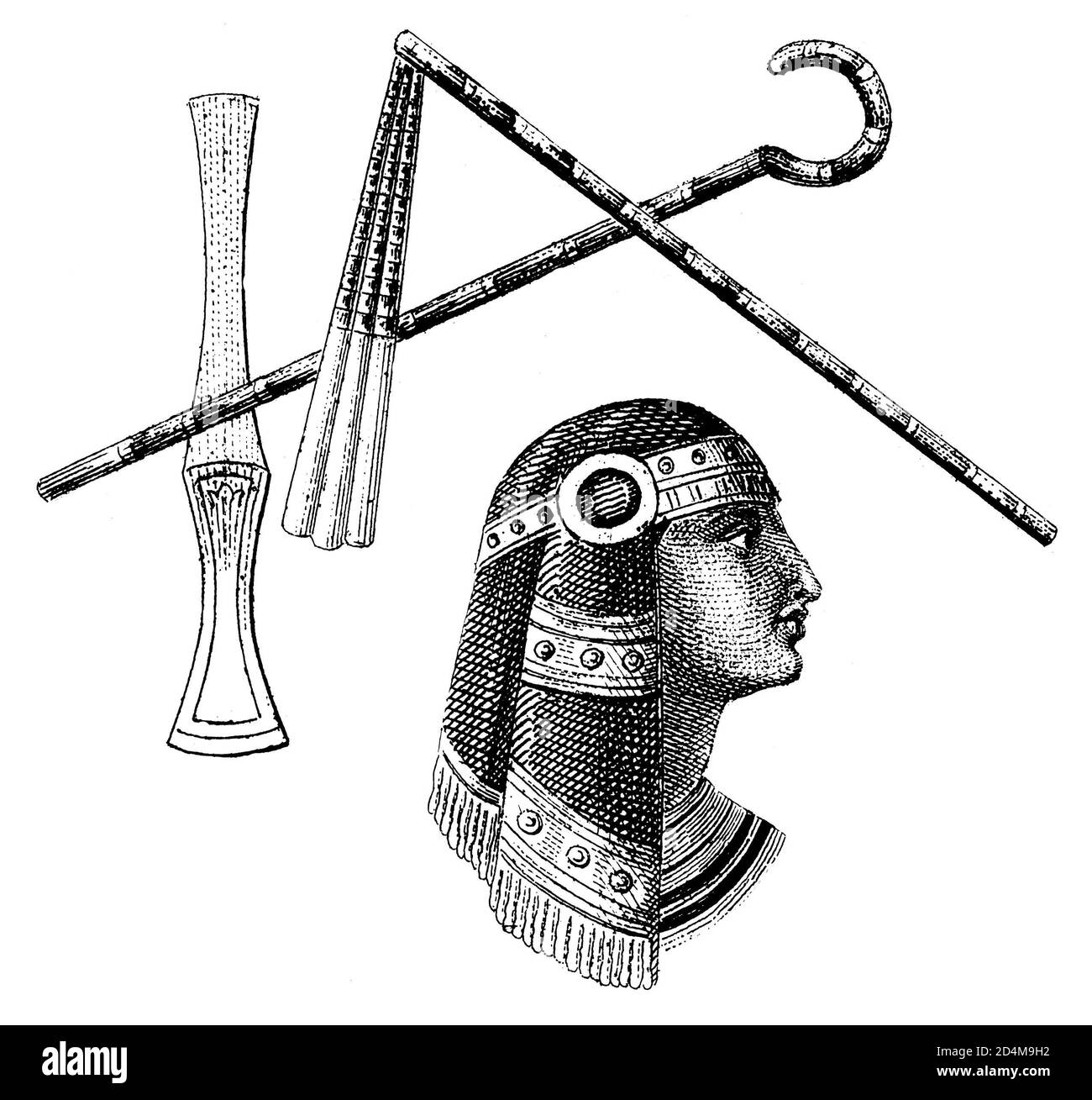 Antique 19th-century illustration of royal symbols in Ancient Egypt. Published in Systematischer Bilder-Atlas zum Conversations-Lexikon, Ikonographisc Stock Photohttps://www.alamy.com/image-license-details/?v=1https://www.alamy.com/antique-19th-century-illustration-of-royal-symbols-in-ancient-egypt-published-in-systematischer-bilder-atlas-zum-conversations-lexikon-ikonographisc-image381533294.html
Antique 19th-century illustration of royal symbols in Ancient Egypt. Published in Systematischer Bilder-Atlas zum Conversations-Lexikon, Ikonographisc Stock Photohttps://www.alamy.com/image-license-details/?v=1https://www.alamy.com/antique-19th-century-illustration-of-royal-symbols-in-ancient-egypt-published-in-systematischer-bilder-atlas-zum-conversations-lexikon-ikonographisc-image381533294.htmlRF2D4M9H2–Antique 19th-century illustration of royal symbols in Ancient Egypt. Published in Systematischer Bilder-Atlas zum Conversations-Lexikon, Ikonographisc
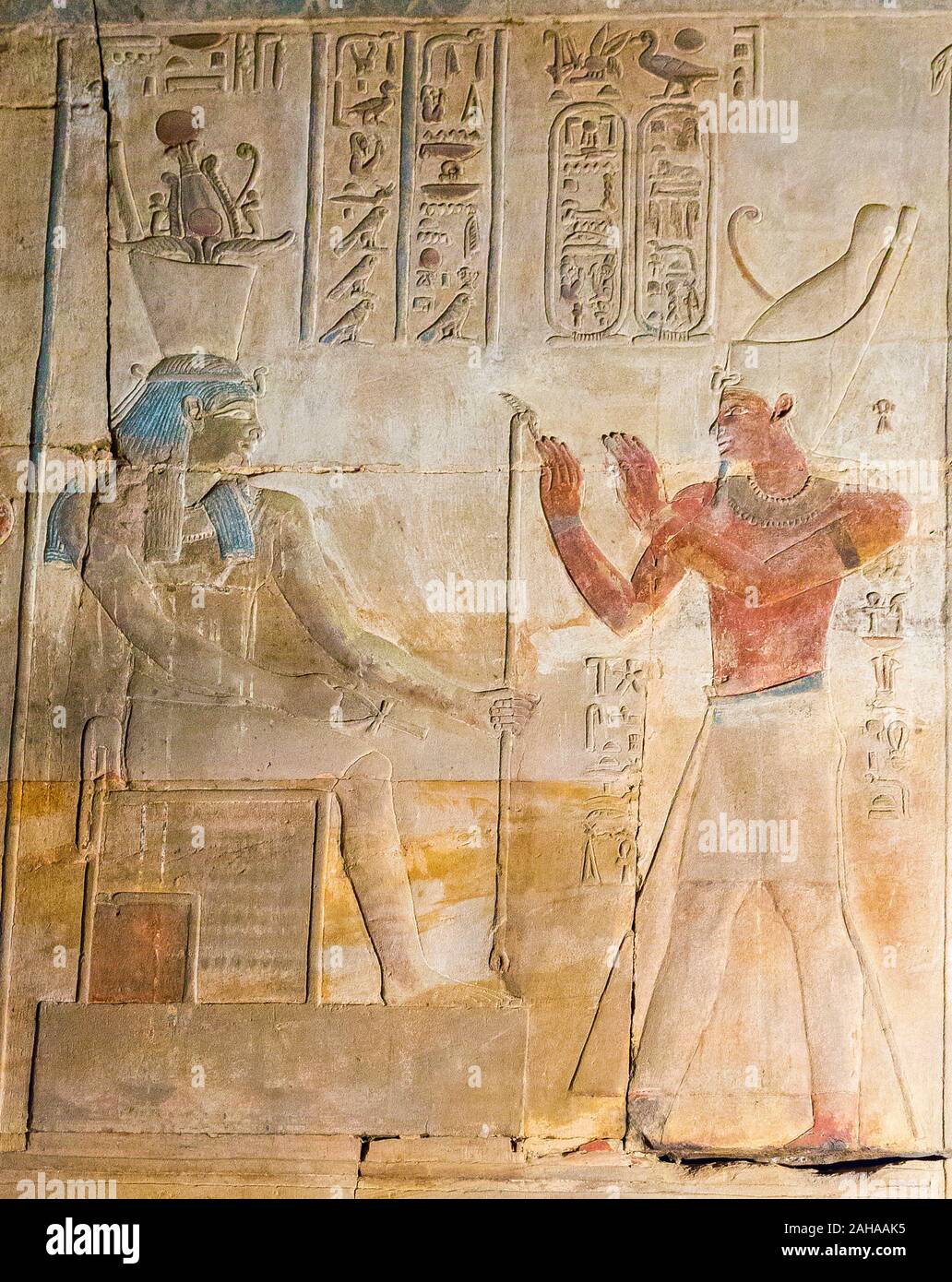 UNESCO World Heritage, Thebes in Egypt, Karnak site, ptolemaic temple of Opet. The king prays god Geb seated on a throne and wearing a Shuti crown. Stock Photohttps://www.alamy.com/image-license-details/?v=1https://www.alamy.com/unesco-world-heritage-thebes-in-egypt-karnak-site-ptolemaic-temple-of-opet-the-king-prays-god-geb-seated-on-a-throne-and-wearing-a-shuti-crown-image337674041.html
UNESCO World Heritage, Thebes in Egypt, Karnak site, ptolemaic temple of Opet. The king prays god Geb seated on a throne and wearing a Shuti crown. Stock Photohttps://www.alamy.com/image-license-details/?v=1https://www.alamy.com/unesco-world-heritage-thebes-in-egypt-karnak-site-ptolemaic-temple-of-opet-the-king-prays-god-geb-seated-on-a-throne-and-wearing-a-shuti-crown-image337674041.htmlRM2AHAAK5–UNESCO World Heritage, Thebes in Egypt, Karnak site, ptolemaic temple of Opet. The king prays god Geb seated on a throne and wearing a Shuti crown.
 Antique 19th-century illustration of royal symbols in Ancient Egypt. Published in Systematischer Bilder-Atlas zum Conversations-Lexikon, Ikonographisc Stock Photohttps://www.alamy.com/image-license-details/?v=1https://www.alamy.com/antique-19th-century-illustration-of-royal-symbols-in-ancient-egypt-published-in-systematischer-bilder-atlas-zum-conversations-lexikon-ikonographisc-image413468654.html
Antique 19th-century illustration of royal symbols in Ancient Egypt. Published in Systematischer Bilder-Atlas zum Conversations-Lexikon, Ikonographisc Stock Photohttps://www.alamy.com/image-license-details/?v=1https://www.alamy.com/antique-19th-century-illustration-of-royal-symbols-in-ancient-egypt-published-in-systematischer-bilder-atlas-zum-conversations-lexikon-ikonographisc-image413468654.htmlRF2F0K3DJ–Antique 19th-century illustration of royal symbols in Ancient Egypt. Published in Systematischer Bilder-Atlas zum Conversations-Lexikon, Ikonographisc
 Relief of Roman emperor Trajan offering the Sokar barque to Hathor suckling her son and Ihy at the Roman birth-house of the Dendera Temple complex Stock Photohttps://www.alamy.com/image-license-details/?v=1https://www.alamy.com/relief-of-roman-emperor-trajan-offering-the-sokar-barque-to-hathor-suckling-her-son-and-ihy-at-the-roman-birth-house-of-the-dendera-temple-complex-image607669539.html
Relief of Roman emperor Trajan offering the Sokar barque to Hathor suckling her son and Ihy at the Roman birth-house of the Dendera Temple complex Stock Photohttps://www.alamy.com/image-license-details/?v=1https://www.alamy.com/relief-of-roman-emperor-trajan-offering-the-sokar-barque-to-hathor-suckling-her-son-and-ihy-at-the-roman-birth-house-of-the-dendera-temple-complex-image607669539.htmlRM2X8HMKF–Relief of Roman emperor Trajan offering the Sokar barque to Hathor suckling her son and Ihy at the Roman birth-house of the Dendera Temple complex
 Egypt. The Karnak Temple Complex.. Ramesses II, wearing the red crown or deshret, making an offering to the god Min. Stock Photohttps://www.alamy.com/image-license-details/?v=1https://www.alamy.com/stock-photo-egypt-the-karnak-temple-complex-ramesses-ii-wearing-the-red-crown-71569822.html
Egypt. The Karnak Temple Complex.. Ramesses II, wearing the red crown or deshret, making an offering to the god Min. Stock Photohttps://www.alamy.com/image-license-details/?v=1https://www.alamy.com/stock-photo-egypt-the-karnak-temple-complex-ramesses-ii-wearing-the-red-crown-71569822.htmlRME4C812–Egypt. The Karnak Temple Complex.. Ramesses II, wearing the red crown or deshret, making an offering to the god Min.
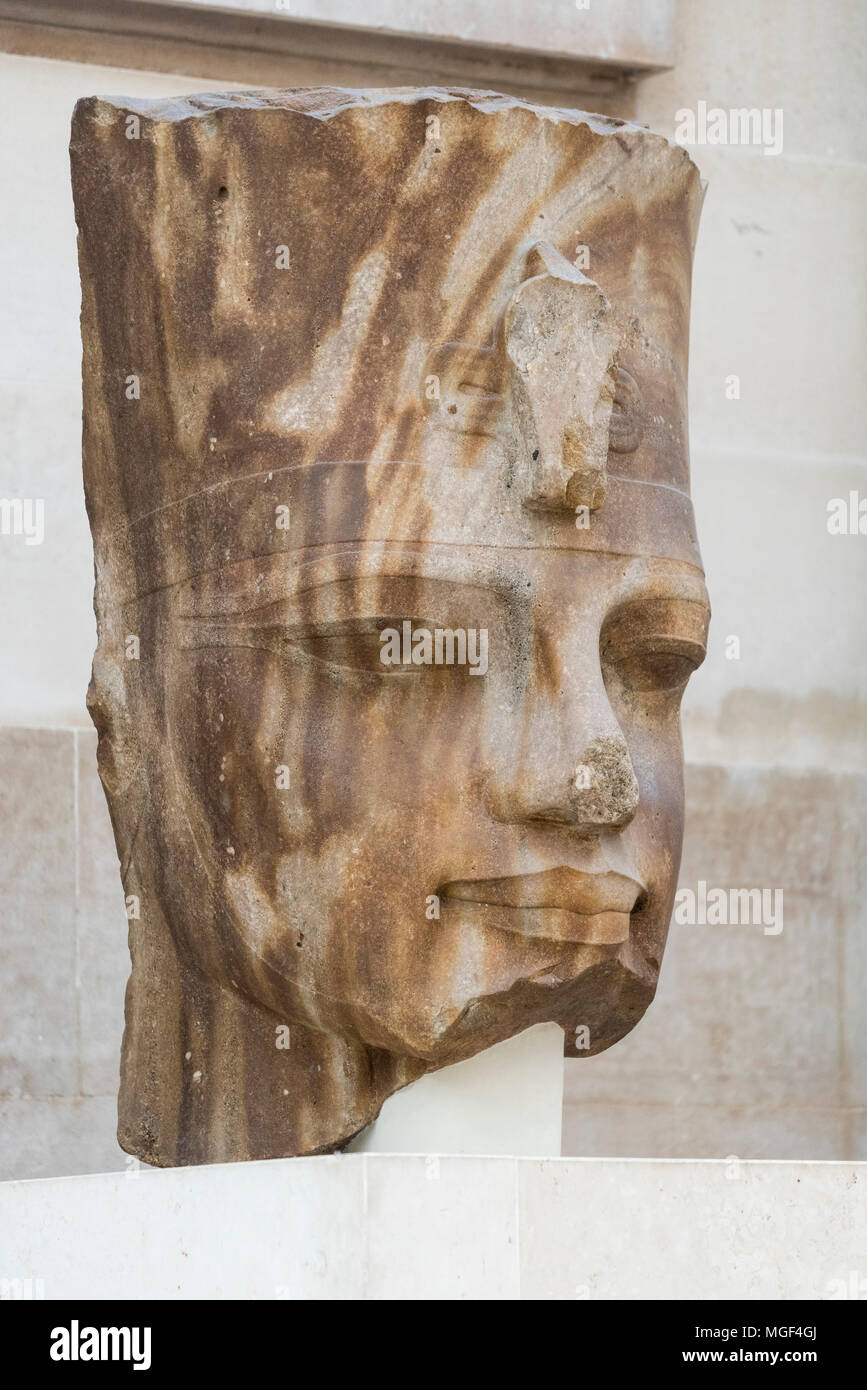 London. England. British Museum. Quartzite head of Egyptian Pharaoh Amenhotep III wearing the Red Crown of Lower Egypt (Deshret) with uraeus Stock Photohttps://www.alamy.com/image-license-details/?v=1https://www.alamy.com/london-england-british-museum-quartzite-head-of-egyptian-pharaoh-amenhotep-iii-wearing-the-red-crown-of-lower-egypt-deshret-with-uraeus-image182271058.html
London. England. British Museum. Quartzite head of Egyptian Pharaoh Amenhotep III wearing the Red Crown of Lower Egypt (Deshret) with uraeus Stock Photohttps://www.alamy.com/image-license-details/?v=1https://www.alamy.com/london-england-british-museum-quartzite-head-of-egyptian-pharaoh-amenhotep-iii-wearing-the-red-crown-of-lower-egypt-deshret-with-uraeus-image182271058.htmlRMMGF4GJ–London. England. British Museum. Quartzite head of Egyptian Pharaoh Amenhotep III wearing the Red Crown of Lower Egypt (Deshret) with uraeus
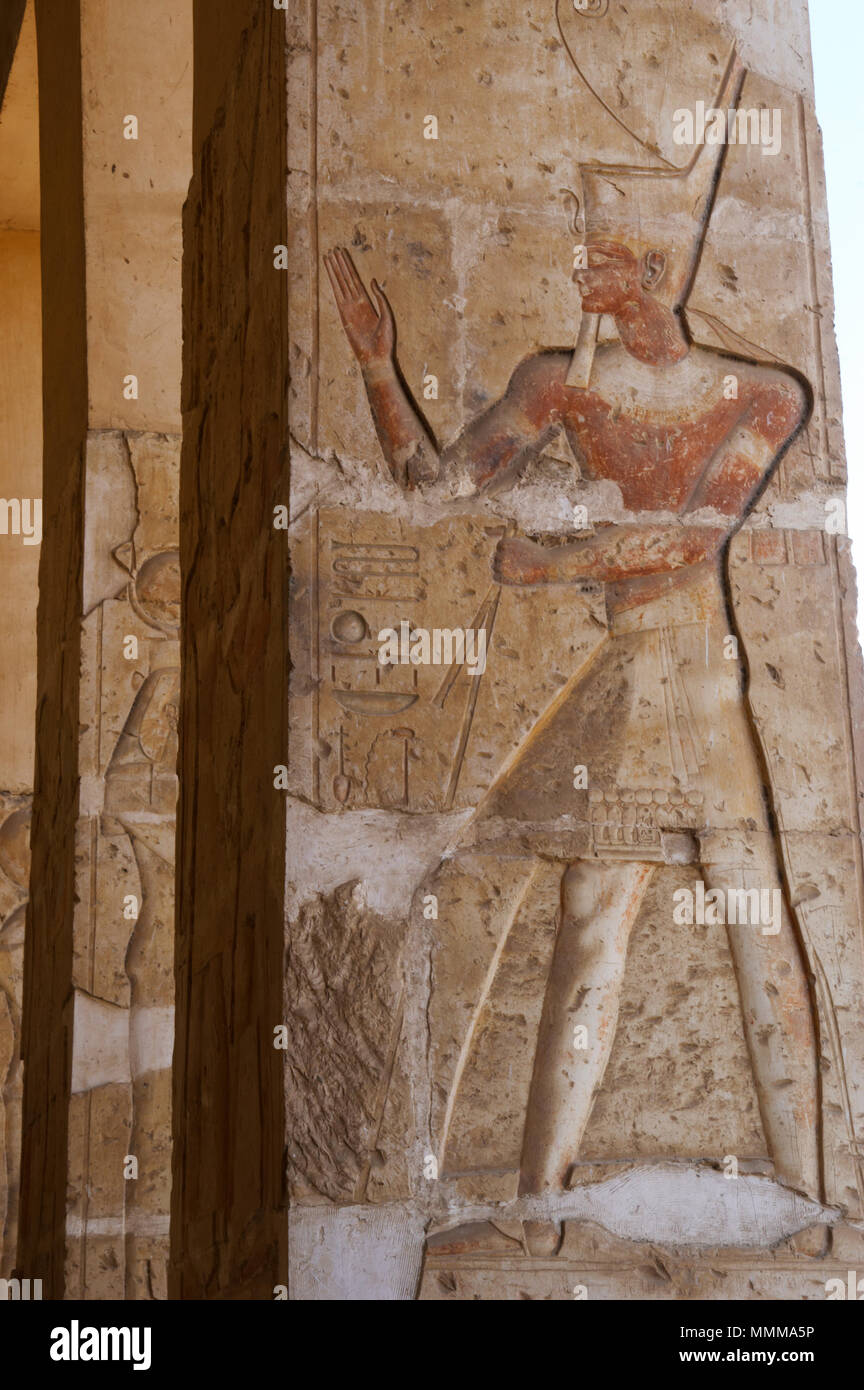 Egypt. Abydos. Temple of Seti I. New Kingdom. 19th Dynasty. The Pharaoh Ramesses II (reign 1279-1213 BC) wearing the Red crown (Deshret). Relief with original polychrome. Stock Photohttps://www.alamy.com/image-license-details/?v=1https://www.alamy.com/egypt-abydos-temple-of-seti-i-new-kingdom-19th-dynasty-the-pharaoh-ramesses-ii-reign-1279-1213-bc-wearing-the-red-crown-deshret-relief-with-original-polychrome-image184843842.html
Egypt. Abydos. Temple of Seti I. New Kingdom. 19th Dynasty. The Pharaoh Ramesses II (reign 1279-1213 BC) wearing the Red crown (Deshret). Relief with original polychrome. Stock Photohttps://www.alamy.com/image-license-details/?v=1https://www.alamy.com/egypt-abydos-temple-of-seti-i-new-kingdom-19th-dynasty-the-pharaoh-ramesses-ii-reign-1279-1213-bc-wearing-the-red-crown-deshret-relief-with-original-polychrome-image184843842.htmlRMMMMA5P–Egypt. Abydos. Temple of Seti I. New Kingdom. 19th Dynasty. The Pharaoh Ramesses II (reign 1279-1213 BC) wearing the Red crown (Deshret). Relief with original polychrome.
 Antique 19th-century engraving of symbols of rank in Ancient Egypt. Published in Systematischer Bilder-Atlas zum Conversations-Lexikon, Ikonographisch Stock Photohttps://www.alamy.com/image-license-details/?v=1https://www.alamy.com/antique-19th-century-engraving-of-symbols-of-rank-in-ancient-egypt-published-in-systematischer-bilder-atlas-zum-conversations-lexikon-ikonographisch-image381533295.html
Antique 19th-century engraving of symbols of rank in Ancient Egypt. Published in Systematischer Bilder-Atlas zum Conversations-Lexikon, Ikonographisch Stock Photohttps://www.alamy.com/image-license-details/?v=1https://www.alamy.com/antique-19th-century-engraving-of-symbols-of-rank-in-ancient-egypt-published-in-systematischer-bilder-atlas-zum-conversations-lexikon-ikonographisch-image381533295.htmlRF2D4M9H3–Antique 19th-century engraving of symbols of rank in Ancient Egypt. Published in Systematischer Bilder-Atlas zum Conversations-Lexikon, Ikonographisch
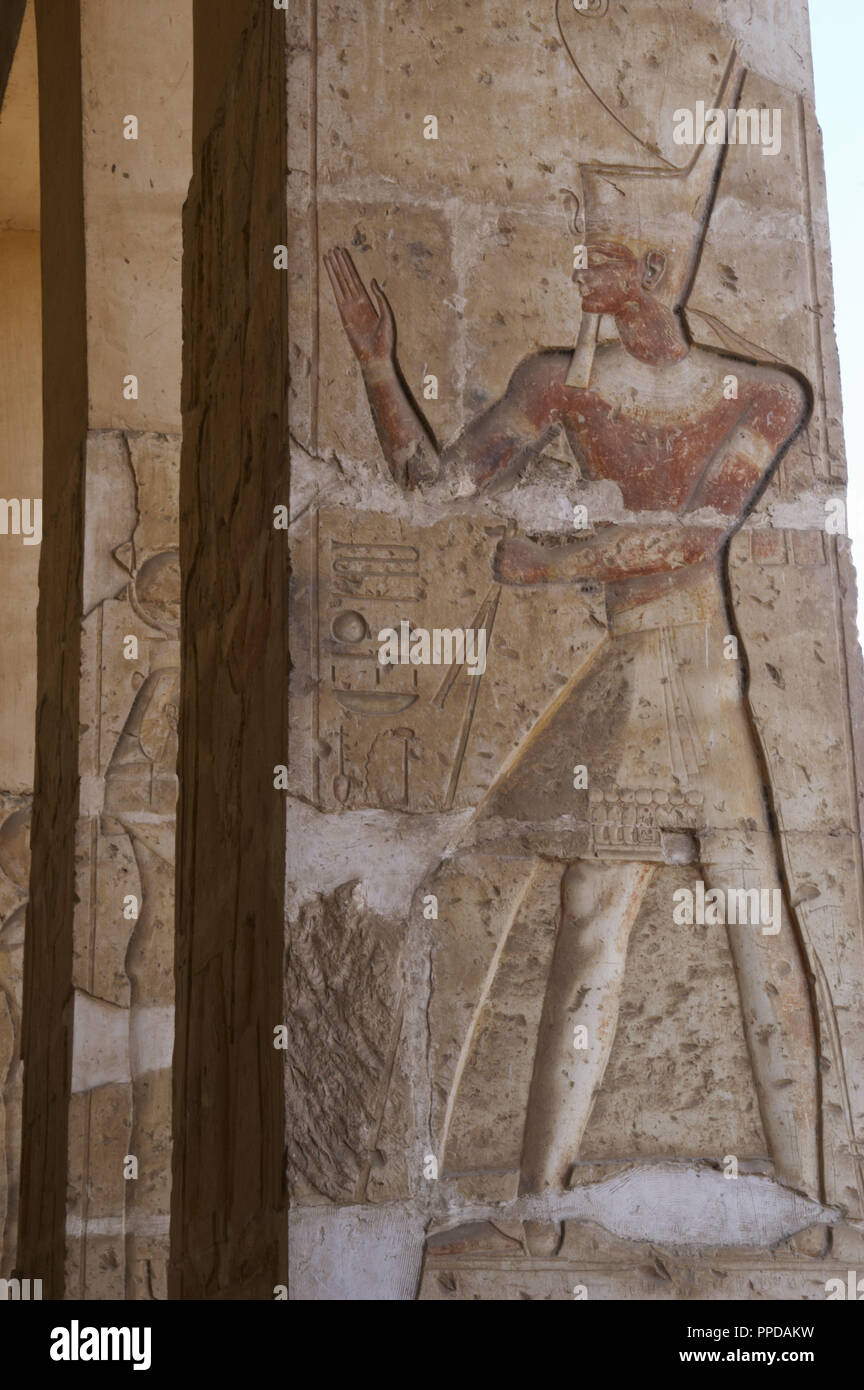 Egypt. Abydos. Temple of Seti I. New Kingdom. 19th Dynasty. The Pharaoh Ramesses II (reign 1279-1213 BC) wearing the Red crown (Deshret). Relief with original polychrome. Stock Photohttps://www.alamy.com/image-license-details/?v=1https://www.alamy.com/egypt-abydos-temple-of-seti-i-new-kingdom-19th-dynasty-the-pharaoh-ramesses-ii-reign-1279-1213-bc-wearing-the-red-crown-deshret-relief-with-original-polychrome-image220340621.html
Egypt. Abydos. Temple of Seti I. New Kingdom. 19th Dynasty. The Pharaoh Ramesses II (reign 1279-1213 BC) wearing the Red crown (Deshret). Relief with original polychrome. Stock Photohttps://www.alamy.com/image-license-details/?v=1https://www.alamy.com/egypt-abydos-temple-of-seti-i-new-kingdom-19th-dynasty-the-pharaoh-ramesses-ii-reign-1279-1213-bc-wearing-the-red-crown-deshret-relief-with-original-polychrome-image220340621.htmlRMPPDAKW–Egypt. Abydos. Temple of Seti I. New Kingdom. 19th Dynasty. The Pharaoh Ramesses II (reign 1279-1213 BC) wearing the Red crown (Deshret). Relief with original polychrome.
 Antique 19th-century engraving of symbols of rank in Ancient Egypt. Published in Systematischer Bilder-Atlas zum Conversations-Lexikon, Ikonographisch Stock Photohttps://www.alamy.com/image-license-details/?v=1https://www.alamy.com/antique-19th-century-engraving-of-symbols-of-rank-in-ancient-egypt-published-in-systematischer-bilder-atlas-zum-conversations-lexikon-ikonographisch-image413475653.html
Antique 19th-century engraving of symbols of rank in Ancient Egypt. Published in Systematischer Bilder-Atlas zum Conversations-Lexikon, Ikonographisch Stock Photohttps://www.alamy.com/image-license-details/?v=1https://www.alamy.com/antique-19th-century-engraving-of-symbols-of-rank-in-ancient-egypt-published-in-systematischer-bilder-atlas-zum-conversations-lexikon-ikonographisch-image413475653.htmlRF2F0KCBH–Antique 19th-century engraving of symbols of rank in Ancient Egypt. Published in Systematischer Bilder-Atlas zum Conversations-Lexikon, Ikonographisch
 Art inspired by Carinated Stone Jar with Rope Pattern, New Kingdom, Dynasty 18, early, ca. 1550–1458 B.C., From Egypt, Upper Egypt, Thebes, Asasif, Courtyard CC 41, Pit 3, Burial D 1, Beside or on inner coffin, 1915–16, Limestone, H. 16.7 cm (6 9/16 in); diam. 18.7 cm (7 3/8 in), This, Classic works modernized by Artotop with a splash of modernity. Shapes, color and value, eye-catching visual impact on art. Emotions through freedom of artworks in a contemporary way. A timeless message pursuing a wildly creative new direction. Artists turning to the digital medium and creating the Artotop NFT Stock Photohttps://www.alamy.com/image-license-details/?v=1https://www.alamy.com/art-inspired-by-carinated-stone-jar-with-rope-pattern-new-kingdom-dynasty-18-early-ca-15501458-bc-from-egypt-upper-egypt-thebes-asasif-courtyard-cc-41-pit-3-burial-d-1-beside-or-on-inner-coffin-191516-limestone-h-167-cm-6-916-in-diam-187-cm-7-38-in-this-classic-works-modernized-by-artotop-with-a-splash-of-modernity-shapes-color-and-value-eye-catching-visual-impact-on-art-emotions-through-freedom-of-artworks-in-a-contemporary-way-a-timeless-message-pursuing-a-wildly-creative-new-direction-artists-turning-to-the-digital-medium-and-creating-the-artotop-nft-image463036249.html
Art inspired by Carinated Stone Jar with Rope Pattern, New Kingdom, Dynasty 18, early, ca. 1550–1458 B.C., From Egypt, Upper Egypt, Thebes, Asasif, Courtyard CC 41, Pit 3, Burial D 1, Beside or on inner coffin, 1915–16, Limestone, H. 16.7 cm (6 9/16 in); diam. 18.7 cm (7 3/8 in), This, Classic works modernized by Artotop with a splash of modernity. Shapes, color and value, eye-catching visual impact on art. Emotions through freedom of artworks in a contemporary way. A timeless message pursuing a wildly creative new direction. Artists turning to the digital medium and creating the Artotop NFT Stock Photohttps://www.alamy.com/image-license-details/?v=1https://www.alamy.com/art-inspired-by-carinated-stone-jar-with-rope-pattern-new-kingdom-dynasty-18-early-ca-15501458-bc-from-egypt-upper-egypt-thebes-asasif-courtyard-cc-41-pit-3-burial-d-1-beside-or-on-inner-coffin-191516-limestone-h-167-cm-6-916-in-diam-187-cm-7-38-in-this-classic-works-modernized-by-artotop-with-a-splash-of-modernity-shapes-color-and-value-eye-catching-visual-impact-on-art-emotions-through-freedom-of-artworks-in-a-contemporary-way-a-timeless-message-pursuing-a-wildly-creative-new-direction-artists-turning-to-the-digital-medium-and-creating-the-artotop-nft-image463036249.htmlRF2HW93CW–Art inspired by Carinated Stone Jar with Rope Pattern, New Kingdom, Dynasty 18, early, ca. 1550–1458 B.C., From Egypt, Upper Egypt, Thebes, Asasif, Courtyard CC 41, Pit 3, Burial D 1, Beside or on inner coffin, 1915–16, Limestone, H. 16.7 cm (6 9/16 in); diam. 18.7 cm (7 3/8 in), This, Classic works modernized by Artotop with a splash of modernity. Shapes, color and value, eye-catching visual impact on art. Emotions through freedom of artworks in a contemporary way. A timeless message pursuing a wildly creative new direction. Artists turning to the digital medium and creating the Artotop NFT
 Integrated vessel model with four jars 664–610 B.C. Late Period, Saite Integrated model vessels, that is, several small vessels on a slab created as a unit, were found in tombs of Dynasty 26 and perhaps early Dynasty 27 tombs. The vessels on a given slab were of one type, but different slabs or tables might hold different types of vessels, from beakers, to rounded nemset jars, to others. These heavy-bottomed jars of lead may represent deshret jars; these normally had rounded bottoms but may have been flattened here to fit on a slab. Faience is the most frequent material, but stone and a few ot Stock Photohttps://www.alamy.com/image-license-details/?v=1https://www.alamy.com/integrated-vessel-model-with-four-jars-664610-bc-late-period-saite-integrated-model-vessels-that-is-several-small-vessels-on-a-slab-created-as-a-unit-were-found-in-tombs-of-dynasty-26-and-perhaps-early-dynasty-27-tombs-the-vessels-on-a-given-slab-were-of-one-type-but-different-slabs-or-tables-might-hold-different-types-of-vessels-from-beakers-to-rounded-nemset-jars-to-others-these-heavy-bottomed-jars-of-lead-may-represent-deshret-jars-these-normally-had-rounded-bottoms-but-may-have-been-flattened-here-to-fit-on-a-slab-faience-is-the-most-frequent-material-but-stone-and-a-few-ot-image457913307.html
Integrated vessel model with four jars 664–610 B.C. Late Period, Saite Integrated model vessels, that is, several small vessels on a slab created as a unit, were found in tombs of Dynasty 26 and perhaps early Dynasty 27 tombs. The vessels on a given slab were of one type, but different slabs or tables might hold different types of vessels, from beakers, to rounded nemset jars, to others. These heavy-bottomed jars of lead may represent deshret jars; these normally had rounded bottoms but may have been flattened here to fit on a slab. Faience is the most frequent material, but stone and a few ot Stock Photohttps://www.alamy.com/image-license-details/?v=1https://www.alamy.com/integrated-vessel-model-with-four-jars-664610-bc-late-period-saite-integrated-model-vessels-that-is-several-small-vessels-on-a-slab-created-as-a-unit-were-found-in-tombs-of-dynasty-26-and-perhaps-early-dynasty-27-tombs-the-vessels-on-a-given-slab-were-of-one-type-but-different-slabs-or-tables-might-hold-different-types-of-vessels-from-beakers-to-rounded-nemset-jars-to-others-these-heavy-bottomed-jars-of-lead-may-represent-deshret-jars-these-normally-had-rounded-bottoms-but-may-have-been-flattened-here-to-fit-on-a-slab-faience-is-the-most-frequent-material-but-stone-and-a-few-ot-image457913307.htmlRM2HGYN2K–Integrated vessel model with four jars 664–610 B.C. Late Period, Saite Integrated model vessels, that is, several small vessels on a slab created as a unit, were found in tombs of Dynasty 26 and perhaps early Dynasty 27 tombs. The vessels on a given slab were of one type, but different slabs or tables might hold different types of vessels, from beakers, to rounded nemset jars, to others. These heavy-bottomed jars of lead may represent deshret jars; these normally had rounded bottoms but may have been flattened here to fit on a slab. Faience is the most frequent material, but stone and a few ot
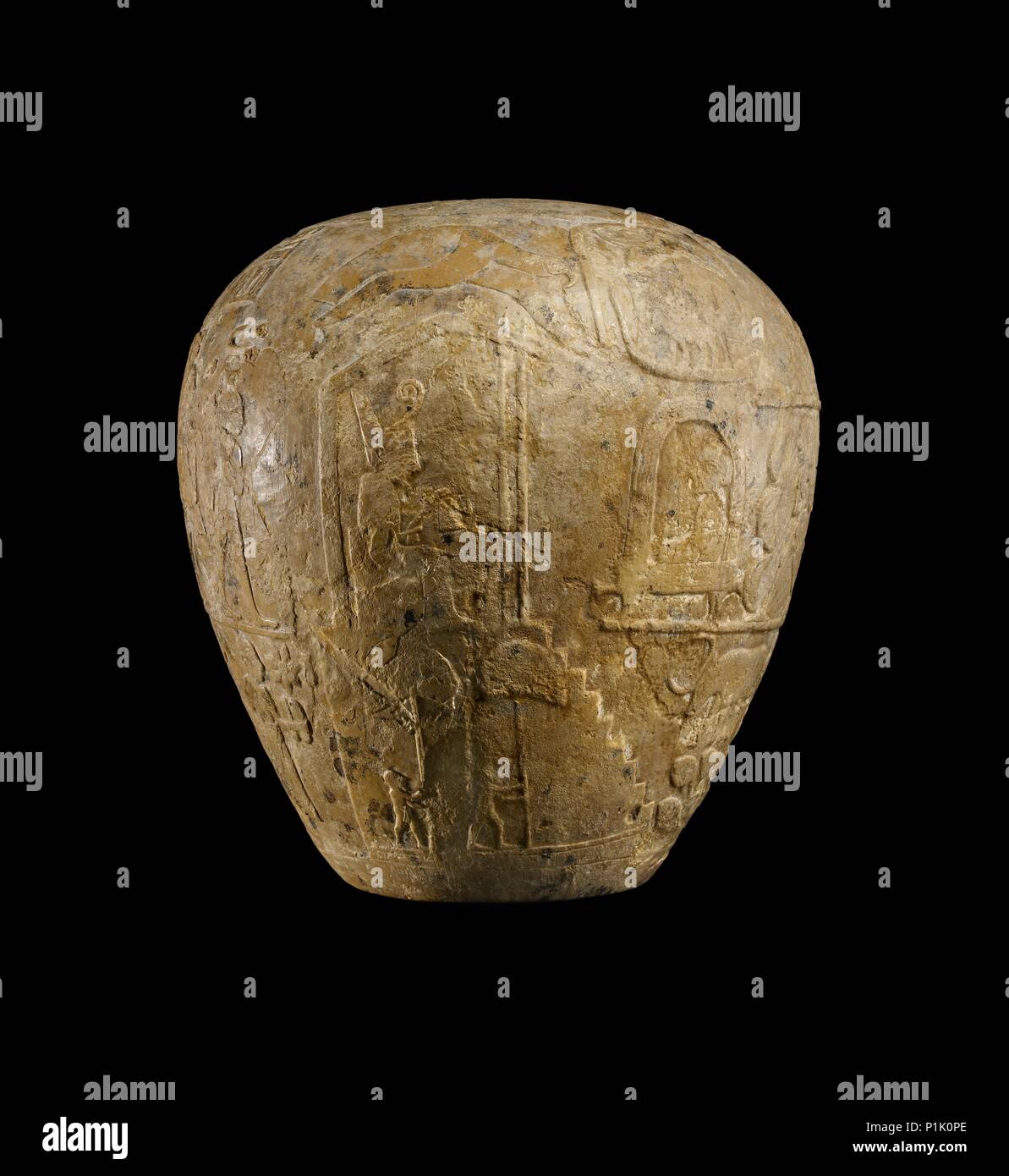 Macehead of Narmer, Protodynastic Period (Egypt), c3300 - c3200 BC. Artist: Unknown. Stock Photohttps://www.alamy.com/image-license-details/?v=1https://www.alamy.com/macehead-of-narmer-protodynastic-period-egypt-c3300-c3200-bc-artist-unknown-image207556790.html
Macehead of Narmer, Protodynastic Period (Egypt), c3300 - c3200 BC. Artist: Unknown. Stock Photohttps://www.alamy.com/image-license-details/?v=1https://www.alamy.com/macehead-of-narmer-protodynastic-period-egypt-c3300-c3200-bc-artist-unknown-image207556790.htmlRMP1K0PE–Macehead of Narmer, Protodynastic Period (Egypt), c3300 - c3200 BC. Artist: Unknown.
 Carinated Stone Jar with Rope Pattern ca. 1550–1458 B.C. New Kingdom This limestone vessel with its baggy shape and sharp carination of the lower body is a traditional Egyptian shape called the deshret-jar. The form is common in pottery found in burials from the Old Kingdom onward. A raised band with carved diagonal lines imitating a twisted cord decorates the base of the neck. The vessel was deposited in the lowest chamber of a pit tomb cut into the forecourt of a reused Middle Kingdom tomb and belonged to the burial of a man named Nakht. The tomb was covered over during the construction of t Stock Photohttps://www.alamy.com/image-license-details/?v=1https://www.alamy.com/carinated-stone-jar-with-rope-pattern-ca-15501458-bc-new-kingdom-this-limestone-vessel-with-its-baggy-shape-and-sharp-carination-of-the-lower-body-is-a-traditional-egyptian-shape-called-the-deshret-jar-the-form-is-common-in-pottery-found-in-burials-from-the-old-kingdom-onward-a-raised-band-with-carved-diagonal-lines-imitating-a-twisted-cord-decorates-the-base-of-the-neck-the-vessel-was-deposited-in-the-lowest-chamber-of-a-pit-tomb-cut-into-the-forecourt-of-a-reused-middle-kingdom-tomb-and-belonged-to-the-burial-of-a-man-named-nakht-the-tomb-was-covered-over-during-the-construction-of-t-image458412009.html
Carinated Stone Jar with Rope Pattern ca. 1550–1458 B.C. New Kingdom This limestone vessel with its baggy shape and sharp carination of the lower body is a traditional Egyptian shape called the deshret-jar. The form is common in pottery found in burials from the Old Kingdom onward. A raised band with carved diagonal lines imitating a twisted cord decorates the base of the neck. The vessel was deposited in the lowest chamber of a pit tomb cut into the forecourt of a reused Middle Kingdom tomb and belonged to the burial of a man named Nakht. The tomb was covered over during the construction of t Stock Photohttps://www.alamy.com/image-license-details/?v=1https://www.alamy.com/carinated-stone-jar-with-rope-pattern-ca-15501458-bc-new-kingdom-this-limestone-vessel-with-its-baggy-shape-and-sharp-carination-of-the-lower-body-is-a-traditional-egyptian-shape-called-the-deshret-jar-the-form-is-common-in-pottery-found-in-burials-from-the-old-kingdom-onward-a-raised-band-with-carved-diagonal-lines-imitating-a-twisted-cord-decorates-the-base-of-the-neck-the-vessel-was-deposited-in-the-lowest-chamber-of-a-pit-tomb-cut-into-the-forecourt-of-a-reused-middle-kingdom-tomb-and-belonged-to-the-burial-of-a-man-named-nakht-the-tomb-was-covered-over-during-the-construction-of-t-image458412009.htmlRM2HHPD5D–Carinated Stone Jar with Rope Pattern ca. 1550–1458 B.C. New Kingdom This limestone vessel with its baggy shape and sharp carination of the lower body is a traditional Egyptian shape called the deshret-jar. The form is common in pottery found in burials from the Old Kingdom onward. A raised band with carved diagonal lines imitating a twisted cord decorates the base of the neck. The vessel was deposited in the lowest chamber of a pit tomb cut into the forecourt of a reused Middle Kingdom tomb and belonged to the burial of a man named Nakht. The tomb was covered over during the construction of t
 Carinated Stone Jar with Rope Pattern, ca. 1550–1458 B.C Stock Photohttps://www.alamy.com/image-license-details/?v=1https://www.alamy.com/stock-image-carinated-stone-jar-with-rope-pattern-ca-15501458-bc-162418917.html
Carinated Stone Jar with Rope Pattern, ca. 1550–1458 B.C Stock Photohttps://www.alamy.com/image-license-details/?v=1https://www.alamy.com/stock-image-carinated-stone-jar-with-rope-pattern-ca-15501458-bc-162418917.htmlRMKC6PYH–Carinated Stone Jar with Rope Pattern, ca. 1550–1458 B.C
 Antique 19th-century engraving of symbols of rank in Ancient Egypt. Published in Systematischer Bilder-Atlas zum Conversations-Lexikon, Ikonographisch Stock Photohttps://www.alamy.com/image-license-details/?v=1https://www.alamy.com/antique-19th-century-engraving-of-symbols-of-rank-in-ancient-egypt-published-in-systematischer-bilder-atlas-zum-conversations-lexikon-ikonographisch-image413476524.html
Antique 19th-century engraving of symbols of rank in Ancient Egypt. Published in Systematischer Bilder-Atlas zum Conversations-Lexikon, Ikonographisch Stock Photohttps://www.alamy.com/image-license-details/?v=1https://www.alamy.com/antique-19th-century-engraving-of-symbols-of-rank-in-ancient-egypt-published-in-systematischer-bilder-atlas-zum-conversations-lexikon-ikonographisch-image413476524.htmlRF2F0KDEM–Antique 19th-century engraving of symbols of rank in Ancient Egypt. Published in Systematischer Bilder-Atlas zum Conversations-Lexikon, Ikonographisch
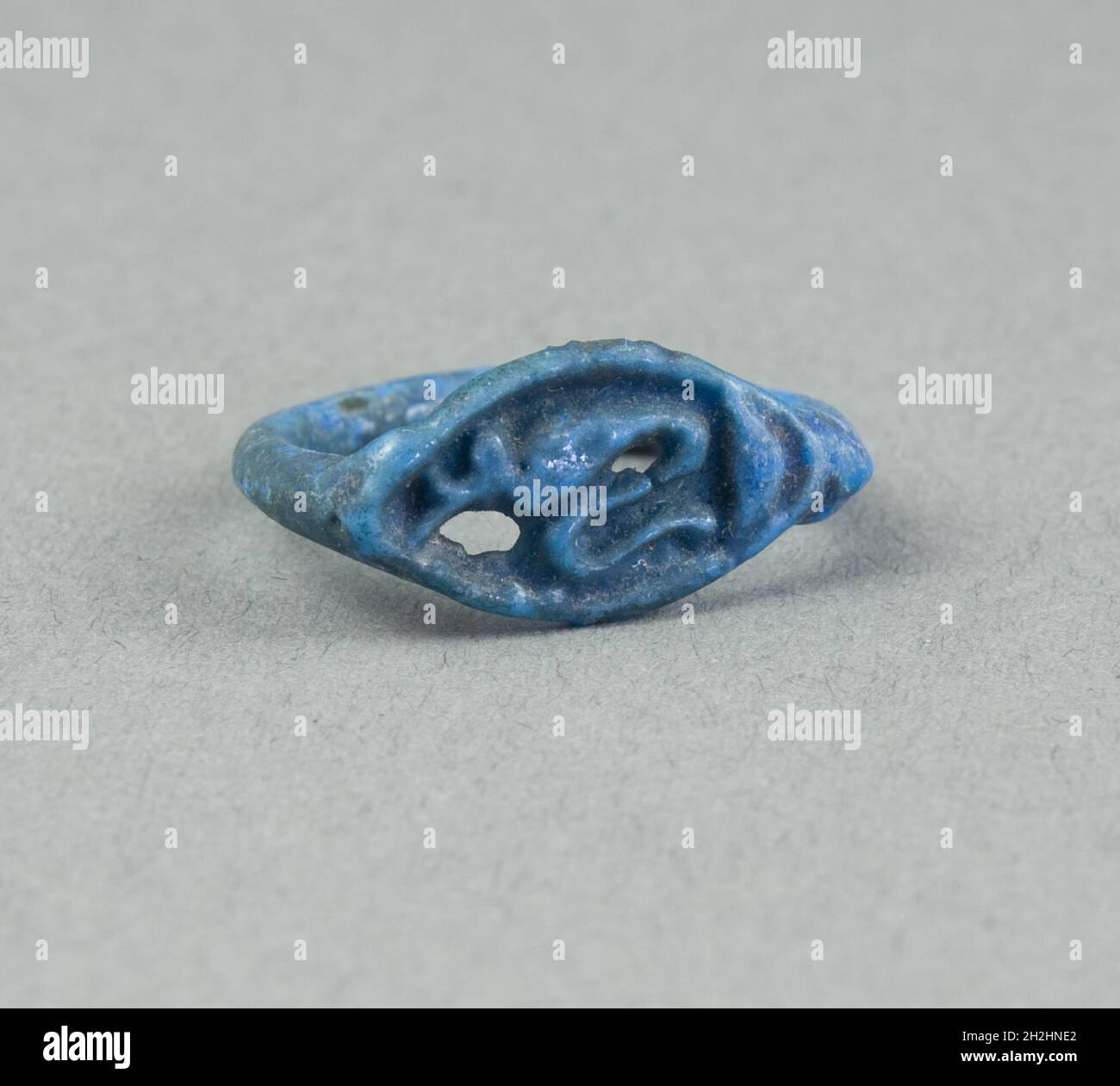 Ring: Figure of Serpent Uto (?) Wearing Crown of Lower Egypt, Egypt, New Kingdom, Dynasty 18 (about 1390 BCE). Stock Photohttps://www.alamy.com/image-license-details/?v=1https://www.alamy.com/ring-figure-of-serpent-uto-wearing-crown-of-lower-egypt-egypt-new-kingdom-dynasty-18-about-1390-bce-image449088922.html
Ring: Figure of Serpent Uto (?) Wearing Crown of Lower Egypt, Egypt, New Kingdom, Dynasty 18 (about 1390 BCE). Stock Photohttps://www.alamy.com/image-license-details/?v=1https://www.alamy.com/ring-figure-of-serpent-uto-wearing-crown-of-lower-egypt-egypt-new-kingdom-dynasty-18-about-1390-bce-image449088922.htmlRM2H2HNE2–Ring: Figure of Serpent Uto (?) Wearing Crown of Lower Egypt, Egypt, New Kingdom, Dynasty 18 (about 1390 BCE).
 Luxor in Egypt, Assassif (part of the Valley of the Nobles), tomb of Kheruef. Cup in the form of a lotus flower. Stock Photohttps://www.alamy.com/image-license-details/?v=1https://www.alamy.com/stock-photo-luxor-in-egypt-assassif-part-of-the-valley-of-the-nobles-tomb-of-kheruef-118744135.html
Luxor in Egypt, Assassif (part of the Valley of the Nobles), tomb of Kheruef. Cup in the form of a lotus flower. Stock Photohttps://www.alamy.com/image-license-details/?v=1https://www.alamy.com/stock-photo-luxor-in-egypt-assassif-part-of-the-valley-of-the-nobles-tomb-of-kheruef-118744135.htmlRMGW579Y–Luxor in Egypt, Assassif (part of the Valley of the Nobles), tomb of Kheruef. Cup in the form of a lotus flower.
 Relief of Roman emperor Trajan offering the Sokar barque to Hathor suckling her son and Ihy at the Roman birth-house of the Dendera Temple complex Stock Photohttps://www.alamy.com/image-license-details/?v=1https://www.alamy.com/relief-of-roman-emperor-trajan-offering-the-sokar-barque-to-hathor-suckling-her-son-and-ihy-at-the-roman-birth-house-of-the-dendera-temple-complex-image607669876.html
Relief of Roman emperor Trajan offering the Sokar barque to Hathor suckling her son and Ihy at the Roman birth-house of the Dendera Temple complex Stock Photohttps://www.alamy.com/image-license-details/?v=1https://www.alamy.com/relief-of-roman-emperor-trajan-offering-the-sokar-barque-to-hathor-suckling-her-son-and-ihy-at-the-roman-birth-house-of-the-dendera-temple-complex-image607669876.htmlRM2X8HN3G–Relief of Roman emperor Trajan offering the Sokar barque to Hathor suckling her son and Ihy at the Roman birth-house of the Dendera Temple complex
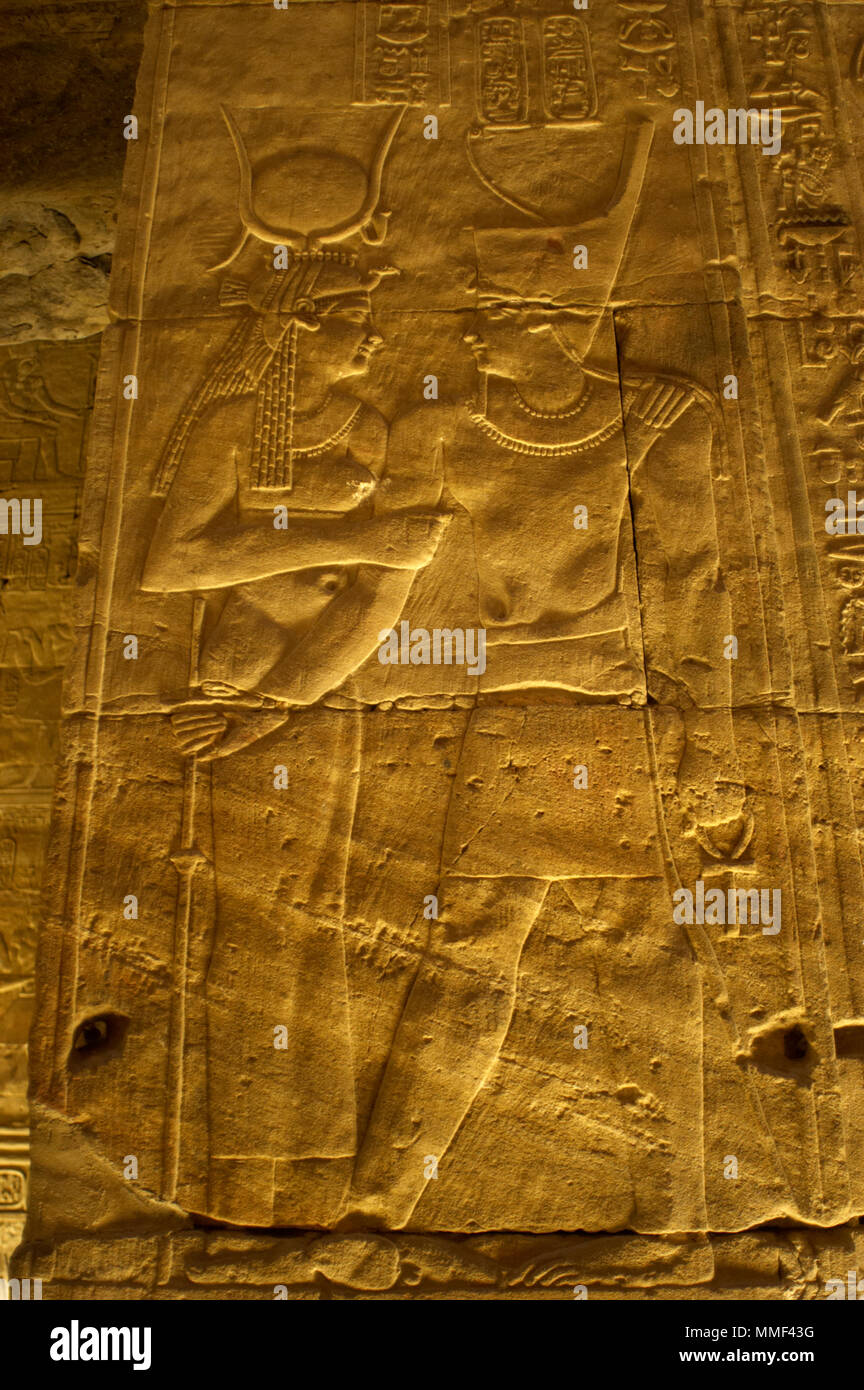 Egypt. Temple of Edfu. Ancient temple dedicated to Horus. Ptolemaic period. It was built during the reign of Ptolemy III and Ptolemy XII, 237-57 BC. Reliefs on the walls of the second hypostyle hall of the temple. Depiction of The Pharaoh wearing the Deshret (Red Crown) which confirmed the king as ruler of Lower Egypt. The Pharaoh making offerings to the God Hathor. Stock Photohttps://www.alamy.com/image-license-details/?v=1https://www.alamy.com/egypt-temple-of-edfu-ancient-temple-dedicated-to-horus-ptolemaic-period-it-was-built-during-the-reign-of-ptolemy-iii-and-ptolemy-xii-237-57-bc-reliefs-on-the-walls-of-the-second-hypostyle-hall-of-the-temple-depiction-of-the-pharaoh-wearing-the-deshret-red-crown-which-confirmed-the-king-as-ruler-of-lower-egypt-the-pharaoh-making-offerings-to-the-god-hathor-image184729316.html
Egypt. Temple of Edfu. Ancient temple dedicated to Horus. Ptolemaic period. It was built during the reign of Ptolemy III and Ptolemy XII, 237-57 BC. Reliefs on the walls of the second hypostyle hall of the temple. Depiction of The Pharaoh wearing the Deshret (Red Crown) which confirmed the king as ruler of Lower Egypt. The Pharaoh making offerings to the God Hathor. Stock Photohttps://www.alamy.com/image-license-details/?v=1https://www.alamy.com/egypt-temple-of-edfu-ancient-temple-dedicated-to-horus-ptolemaic-period-it-was-built-during-the-reign-of-ptolemy-iii-and-ptolemy-xii-237-57-bc-reliefs-on-the-walls-of-the-second-hypostyle-hall-of-the-temple-depiction-of-the-pharaoh-wearing-the-deshret-red-crown-which-confirmed-the-king-as-ruler-of-lower-egypt-the-pharaoh-making-offerings-to-the-god-hathor-image184729316.htmlRMMMF43G–Egypt. Temple of Edfu. Ancient temple dedicated to Horus. Ptolemaic period. It was built during the reign of Ptolemy III and Ptolemy XII, 237-57 BC. Reliefs on the walls of the second hypostyle hall of the temple. Depiction of The Pharaoh wearing the Deshret (Red Crown) which confirmed the king as ruler of Lower Egypt. The Pharaoh making offerings to the God Hathor.
 Egyptian Art. Temple of Kom Ombo. Ptolemaic Dynasty. 2nd century B.C. Pharaoh offering with Red Crown. Relief. Stock Photohttps://www.alamy.com/image-license-details/?v=1https://www.alamy.com/stock-photo-egyptian-art-temple-of-kom-ombo-ptolemaic-dynasty-2nd-century-bc-pharaoh-74572262.html
Egyptian Art. Temple of Kom Ombo. Ptolemaic Dynasty. 2nd century B.C. Pharaoh offering with Red Crown. Relief. Stock Photohttps://www.alamy.com/image-license-details/?v=1https://www.alamy.com/stock-photo-egyptian-art-temple-of-kom-ombo-ptolemaic-dynasty-2nd-century-bc-pharaoh-74572262.htmlRME991K2–Egyptian Art. Temple of Kom Ombo. Ptolemaic Dynasty. 2nd century B.C. Pharaoh offering with Red Crown. Relief.
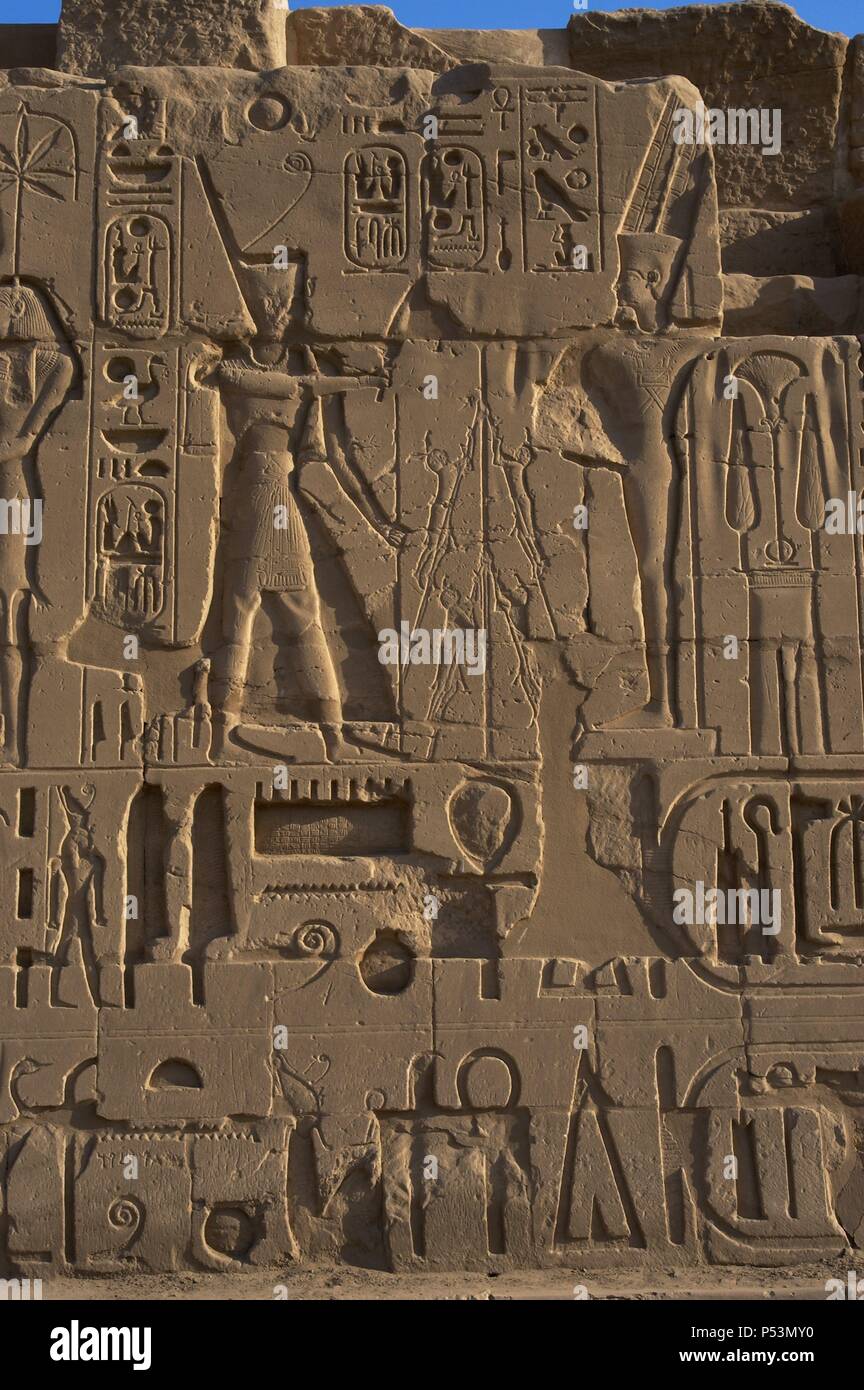 Egyptian Art. The Karnak Temple Complex. Relief depicting the Pharaoh Ramesses II, wearing the red crown or deshret, making an offering to the god Min. 19th Dynasty. New Kingdom. Egypt. Stock Photohttps://www.alamy.com/image-license-details/?v=1https://www.alamy.com/egyptian-art-the-karnak-temple-complex-relief-depicting-the-pharaoh-ramesses-ii-wearing-the-red-crown-or-deshret-making-an-offering-to-the-god-min-19th-dynasty-new-kingdom-egypt-image209679988.html
Egyptian Art. The Karnak Temple Complex. Relief depicting the Pharaoh Ramesses II, wearing the red crown or deshret, making an offering to the god Min. 19th Dynasty. New Kingdom. Egypt. Stock Photohttps://www.alamy.com/image-license-details/?v=1https://www.alamy.com/egyptian-art-the-karnak-temple-complex-relief-depicting-the-pharaoh-ramesses-ii-wearing-the-red-crown-or-deshret-making-an-offering-to-the-god-min-19th-dynasty-new-kingdom-egypt-image209679988.htmlRMP53MY0–Egyptian Art. The Karnak Temple Complex. Relief depicting the Pharaoh Ramesses II, wearing the red crown or deshret, making an offering to the god Min. 19th Dynasty. New Kingdom. Egypt.
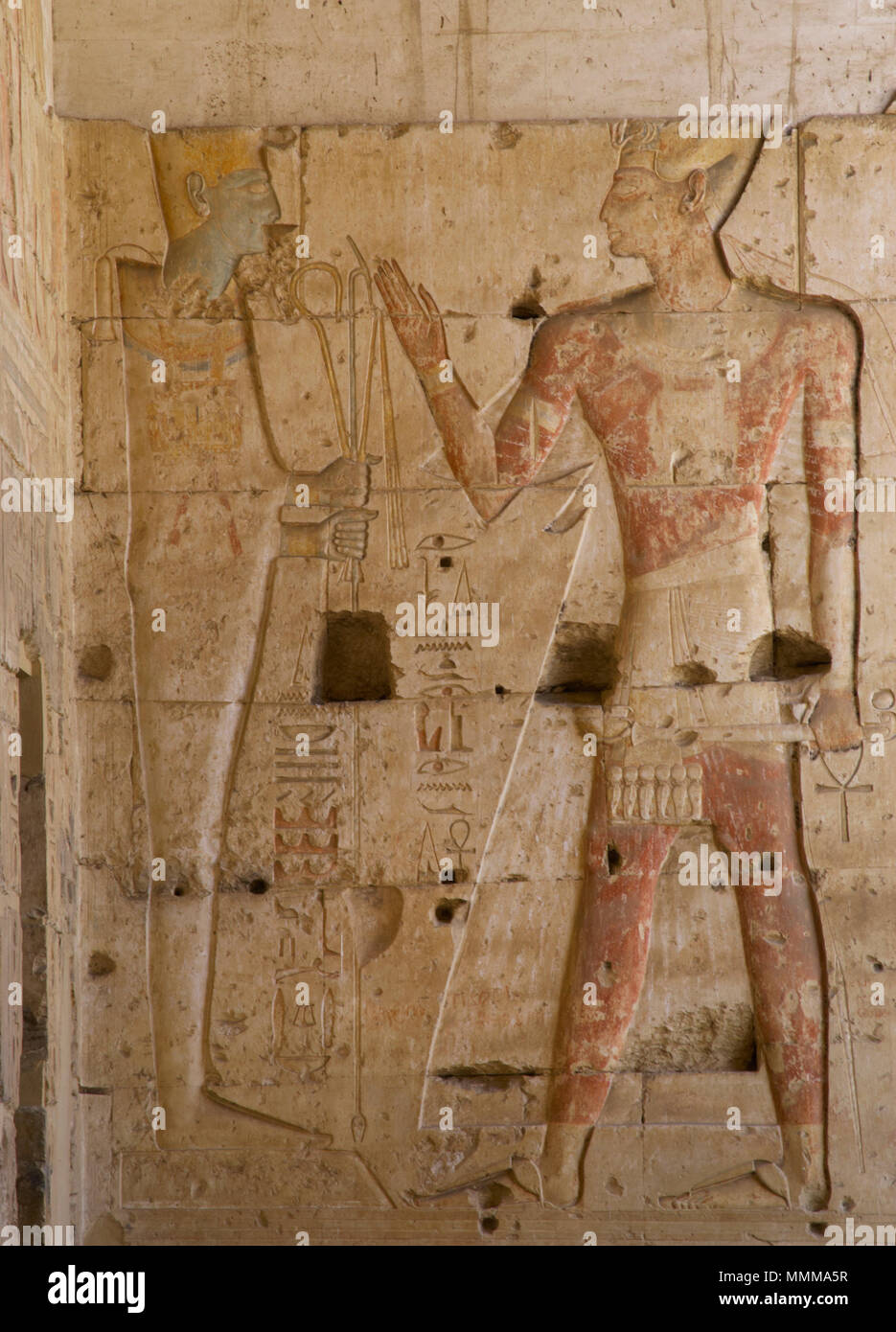 Egypt. Abydos. Temple of Seti I. New Kingdom. 19th Dynasty. The Pharaoh and god Ptah, in the form of a mummified man, the cosmic architect, a god of arts, trades and crafts. Relief with original polychrome. Stock Photohttps://www.alamy.com/image-license-details/?v=1https://www.alamy.com/egypt-abydos-temple-of-seti-i-new-kingdom-19th-dynasty-the-pharaoh-and-god-ptah-in-the-form-of-a-mummified-man-the-cosmic-architect-a-god-of-arts-trades-and-crafts-relief-with-original-polychrome-image184843843.html
Egypt. Abydos. Temple of Seti I. New Kingdom. 19th Dynasty. The Pharaoh and god Ptah, in the form of a mummified man, the cosmic architect, a god of arts, trades and crafts. Relief with original polychrome. Stock Photohttps://www.alamy.com/image-license-details/?v=1https://www.alamy.com/egypt-abydos-temple-of-seti-i-new-kingdom-19th-dynasty-the-pharaoh-and-god-ptah-in-the-form-of-a-mummified-man-the-cosmic-architect-a-god-of-arts-trades-and-crafts-relief-with-original-polychrome-image184843843.htmlRMMMMA5R–Egypt. Abydos. Temple of Seti I. New Kingdom. 19th Dynasty. The Pharaoh and god Ptah, in the form of a mummified man, the cosmic architect, a god of arts, trades and crafts. Relief with original polychrome.
 Temple of Ramses III. Relief depicting Ramses III capturing his enemies before Ra-Horajti. Detail of the pharaoh. Egypt. Stock Photohttps://www.alamy.com/image-license-details/?v=1https://www.alamy.com/stock-photo-temple-of-ramses-iii-relief-depicting-ramses-iii-capturing-his-enemies-30411046.html
Temple of Ramses III. Relief depicting Ramses III capturing his enemies before Ra-Horajti. Detail of the pharaoh. Egypt. Stock Photohttps://www.alamy.com/image-license-details/?v=1https://www.alamy.com/stock-photo-temple-of-ramses-iii-relief-depicting-ramses-iii-capturing-his-enemies-30411046.htmlRMBND9GP–Temple of Ramses III. Relief depicting Ramses III capturing his enemies before Ra-Horajti. Detail of the pharaoh. Egypt.
 Amulet of the Crown of Lower Egypt, Egypt, Third Intermediate Period, Dynasty 21-25 (1070-656 BCE). Stock Photohttps://www.alamy.com/image-license-details/?v=1https://www.alamy.com/amulet-of-the-crown-of-lower-egypt-egypt-third-intermediate-period-dynasty-21-25-1070-656-bce-image444291866.html
Amulet of the Crown of Lower Egypt, Egypt, Third Intermediate Period, Dynasty 21-25 (1070-656 BCE). Stock Photohttps://www.alamy.com/image-license-details/?v=1https://www.alamy.com/amulet-of-the-crown-of-lower-egypt-egypt-third-intermediate-period-dynasty-21-25-1070-656-bce-image444291866.htmlRM2GPR6PJ–Amulet of the Crown of Lower Egypt, Egypt, Third Intermediate Period, Dynasty 21-25 (1070-656 BCE).
 UNESCO World Heritage, Thebes in Egypt, Karnak site, ptolemaic temple of Opet. The king, wearing a starched loincloth, censes god Amun. Stock Photohttps://www.alamy.com/image-license-details/?v=1https://www.alamy.com/unesco-world-heritage-thebes-in-egypt-karnak-site-ptolemaic-temple-of-opet-the-king-wearing-a-starched-loincloth-censes-god-amun-image337673841.html
UNESCO World Heritage, Thebes in Egypt, Karnak site, ptolemaic temple of Opet. The king, wearing a starched loincloth, censes god Amun. Stock Photohttps://www.alamy.com/image-license-details/?v=1https://www.alamy.com/unesco-world-heritage-thebes-in-egypt-karnak-site-ptolemaic-temple-of-opet-the-king-wearing-a-starched-loincloth-censes-god-amun-image337673841.htmlRM2AHAAC1–UNESCO World Heritage, Thebes in Egypt, Karnak site, ptolemaic temple of Opet. The king, wearing a starched loincloth, censes god Amun.
 Egypt, Cairo, Tutankhamon jewellery, from his tomb in Luxor : A counterweight for the pectoral, combined with the corslet of the king. Stock Photohttps://www.alamy.com/image-license-details/?v=1https://www.alamy.com/egypt-cairo-tutankhamon-jewellery-from-his-tomb-in-luxor-a-counterweight-for-the-pectoral-combined-with-the-corslet-of-the-king-image367873696.html
Egypt, Cairo, Tutankhamon jewellery, from his tomb in Luxor : A counterweight for the pectoral, combined with the corslet of the king. Stock Photohttps://www.alamy.com/image-license-details/?v=1https://www.alamy.com/egypt-cairo-tutankhamon-jewellery-from-his-tomb-in-luxor-a-counterweight-for-the-pectoral-combined-with-the-corslet-of-the-king-image367873696.htmlRM2CAE2J8–Egypt, Cairo, Tutankhamon jewellery, from his tomb in Luxor : A counterweight for the pectoral, combined with the corslet of the king.
 Relief of Roman emperor Trajan offering the Sokar barque to Hathor suckling her son and Ihy at the Roman birth-house of the Dendera Temple complex Stock Photohttps://www.alamy.com/image-license-details/?v=1https://www.alamy.com/relief-of-roman-emperor-trajan-offering-the-sokar-barque-to-hathor-suckling-her-son-and-ihy-at-the-roman-birth-house-of-the-dendera-temple-complex-image607669681.html
Relief of Roman emperor Trajan offering the Sokar barque to Hathor suckling her son and Ihy at the Roman birth-house of the Dendera Temple complex Stock Photohttps://www.alamy.com/image-license-details/?v=1https://www.alamy.com/relief-of-roman-emperor-trajan-offering-the-sokar-barque-to-hathor-suckling-her-son-and-ihy-at-the-roman-birth-house-of-the-dendera-temple-complex-image607669681.htmlRM2X8HMTH–Relief of Roman emperor Trajan offering the Sokar barque to Hathor suckling her son and Ihy at the Roman birth-house of the Dendera Temple complex
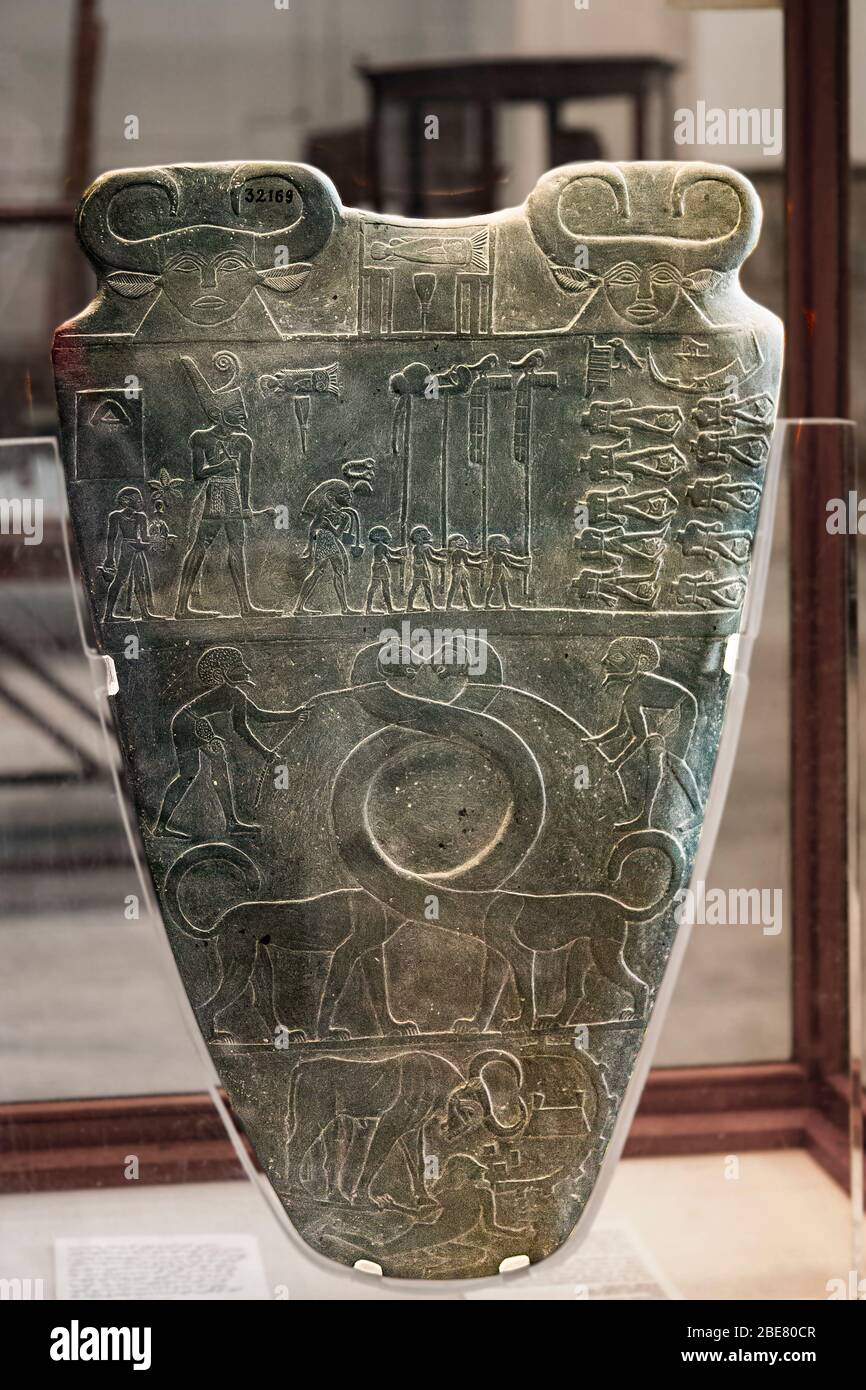 Cairo, Egyptian Museum, Narmer palette. Siltstone, found in Hierakonpolis. Procession of standards, fantastic animals and bull destroying a fortress. Stock Photohttps://www.alamy.com/image-license-details/?v=1https://www.alamy.com/cairo-egyptian-museum-narmer-palette-siltstone-found-in-hierakonpolis-procession-of-standards-fantastic-animals-and-bull-destroying-a-fortress-image352988519.html
Cairo, Egyptian Museum, Narmer palette. Siltstone, found in Hierakonpolis. Procession of standards, fantastic animals and bull destroying a fortress. Stock Photohttps://www.alamy.com/image-license-details/?v=1https://www.alamy.com/cairo-egyptian-museum-narmer-palette-siltstone-found-in-hierakonpolis-procession-of-standards-fantastic-animals-and-bull-destroying-a-fortress-image352988519.htmlRM2BE80CR–Cairo, Egyptian Museum, Narmer palette. Siltstone, found in Hierakonpolis. Procession of standards, fantastic animals and bull destroying a fortress.
 Cairo, Egyptian Museum, gold bracelet found in the tomb of the queen Ahhotep, the mother of Ahmosis, Dra Abu el Naga, Luxor. Coronation ritual. Stock Photohttps://www.alamy.com/image-license-details/?v=1https://www.alamy.com/cairo-egyptian-museum-gold-bracelet-found-in-the-tomb-of-the-queen-ahhotep-the-mother-of-ahmosis-dra-abu-el-naga-luxor-coronation-ritual-image401926783.html
Cairo, Egyptian Museum, gold bracelet found in the tomb of the queen Ahhotep, the mother of Ahmosis, Dra Abu el Naga, Luxor. Coronation ritual. Stock Photohttps://www.alamy.com/image-license-details/?v=1https://www.alamy.com/cairo-egyptian-museum-gold-bracelet-found-in-the-tomb-of-the-queen-ahhotep-the-mother-of-ahmosis-dra-abu-el-naga-luxor-coronation-ritual-image401926783.htmlRM2E9W9KY–Cairo, Egyptian Museum, gold bracelet found in the tomb of the queen Ahhotep, the mother of Ahmosis, Dra Abu el Naga, Luxor. Coronation ritual.
 Egyptian Art. The Karnak Temple Complex. Relief depicting the Pharaoh Ramesses II, wearing the Deshret or Red Corwn, making an offering to the god Ptah. 19th Dynasty. New Kingdom. Egypt. Stock Photohttps://www.alamy.com/image-license-details/?v=1https://www.alamy.com/egyptian-art-the-karnak-temple-complex-relief-depicting-the-pharaoh-ramesses-ii-wearing-the-deshret-or-red-corwn-making-an-offering-to-the-god-ptah-19th-dynasty-new-kingdom-egypt-image209679952.html
Egyptian Art. The Karnak Temple Complex. Relief depicting the Pharaoh Ramesses II, wearing the Deshret or Red Corwn, making an offering to the god Ptah. 19th Dynasty. New Kingdom. Egypt. Stock Photohttps://www.alamy.com/image-license-details/?v=1https://www.alamy.com/egyptian-art-the-karnak-temple-complex-relief-depicting-the-pharaoh-ramesses-ii-wearing-the-deshret-or-red-corwn-making-an-offering-to-the-god-ptah-19th-dynasty-new-kingdom-egypt-image209679952.htmlRMP53MWM–Egyptian Art. The Karnak Temple Complex. Relief depicting the Pharaoh Ramesses II, wearing the Deshret or Red Corwn, making an offering to the god Ptah. 19th Dynasty. New Kingdom. Egypt.
 Temple of Ramses III. Relief depicting Ramses III capturing his enemies before Ra-Horajti. Egypt. Stock Photohttps://www.alamy.com/image-license-details/?v=1https://www.alamy.com/stock-photo-temple-of-ramses-iii-relief-depicting-ramses-iii-capturing-his-enemies-30411093.html
Temple of Ramses III. Relief depicting Ramses III capturing his enemies before Ra-Horajti. Egypt. Stock Photohttps://www.alamy.com/image-license-details/?v=1https://www.alamy.com/stock-photo-temple-of-ramses-iii-relief-depicting-ramses-iii-capturing-his-enemies-30411093.htmlRMBND9JD–Temple of Ramses III. Relief depicting Ramses III capturing his enemies before Ra-Horajti. Egypt.
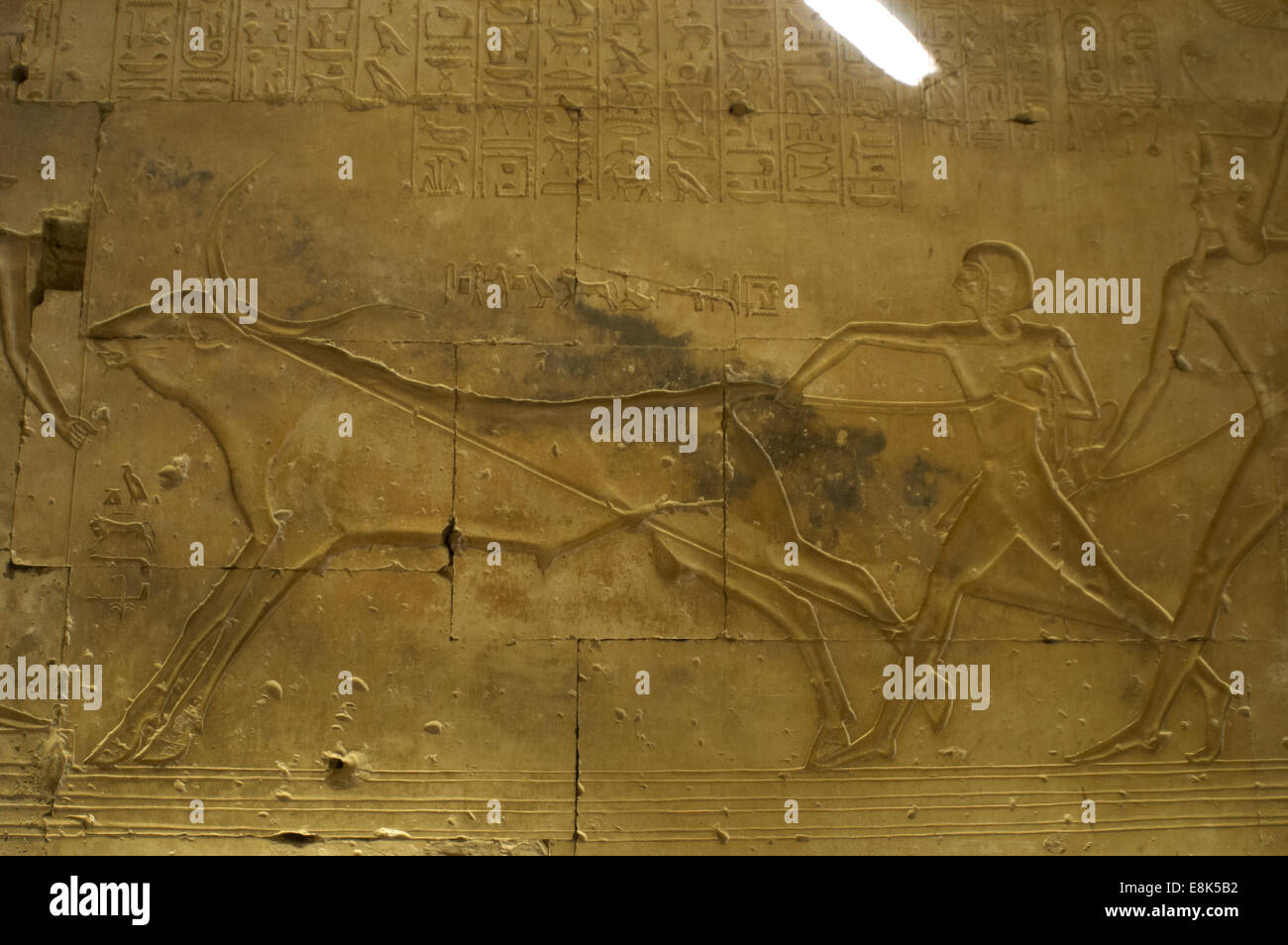 Egyptian Art. Temple of Seti I at Abydos. Relief depicting the pharaoh Ramesses II lassoing a bull with his father Seti I. Stock Photohttps://www.alamy.com/image-license-details/?v=1https://www.alamy.com/stock-photo-egyptian-art-temple-of-seti-i-at-abydos-relief-depicting-the-pharaoh-74180038.html
Egyptian Art. Temple of Seti I at Abydos. Relief depicting the pharaoh Ramesses II lassoing a bull with his father Seti I. Stock Photohttps://www.alamy.com/image-license-details/?v=1https://www.alamy.com/stock-photo-egyptian-art-temple-of-seti-i-at-abydos-relief-depicting-the-pharaoh-74180038.htmlRME8K5B2–Egyptian Art. Temple of Seti I at Abydos. Relief depicting the pharaoh Ramesses II lassoing a bull with his father Seti I.
 Relief of Roman emperor Trajan offering the Sokar barque to Hathor suckling her son and Ihy at the Roman birth-house of the Dendera Temple complex Stock Photohttps://www.alamy.com/image-license-details/?v=1https://www.alamy.com/relief-of-roman-emperor-trajan-offering-the-sokar-barque-to-hathor-suckling-her-son-and-ihy-at-the-roman-birth-house-of-the-dendera-temple-complex-image607670071.html
Relief of Roman emperor Trajan offering the Sokar barque to Hathor suckling her son and Ihy at the Roman birth-house of the Dendera Temple complex Stock Photohttps://www.alamy.com/image-license-details/?v=1https://www.alamy.com/relief-of-roman-emperor-trajan-offering-the-sokar-barque-to-hathor-suckling-her-son-and-ihy-at-the-roman-birth-house-of-the-dendera-temple-complex-image607670071.htmlRM2X8HNAF–Relief of Roman emperor Trajan offering the Sokar barque to Hathor suckling her son and Ihy at the Roman birth-house of the Dendera Temple complex
 Egypt, Cairo, Egyptian Museum, gold bracelet found in the tomb of the queen Ahhotep, the mother of Ahmosis, Dra Abu el Naga, Luxor. Coronation ritual. Stock Photohttps://www.alamy.com/image-license-details/?v=1https://www.alamy.com/egypt-cairo-egyptian-museum-gold-bracelet-found-in-the-tomb-of-the-queen-ahhotep-the-mother-of-ahmosis-dra-abu-el-naga-luxor-coronation-ritual-image401933754.html
Egypt, Cairo, Egyptian Museum, gold bracelet found in the tomb of the queen Ahhotep, the mother of Ahmosis, Dra Abu el Naga, Luxor. Coronation ritual. Stock Photohttps://www.alamy.com/image-license-details/?v=1https://www.alamy.com/egypt-cairo-egyptian-museum-gold-bracelet-found-in-the-tomb-of-the-queen-ahhotep-the-mother-of-ahmosis-dra-abu-el-naga-luxor-coronation-ritual-image401933754.htmlRM2E9WJGX–Egypt, Cairo, Egyptian Museum, gold bracelet found in the tomb of the queen Ahhotep, the mother of Ahmosis, Dra Abu el Naga, Luxor. Coronation ritual.
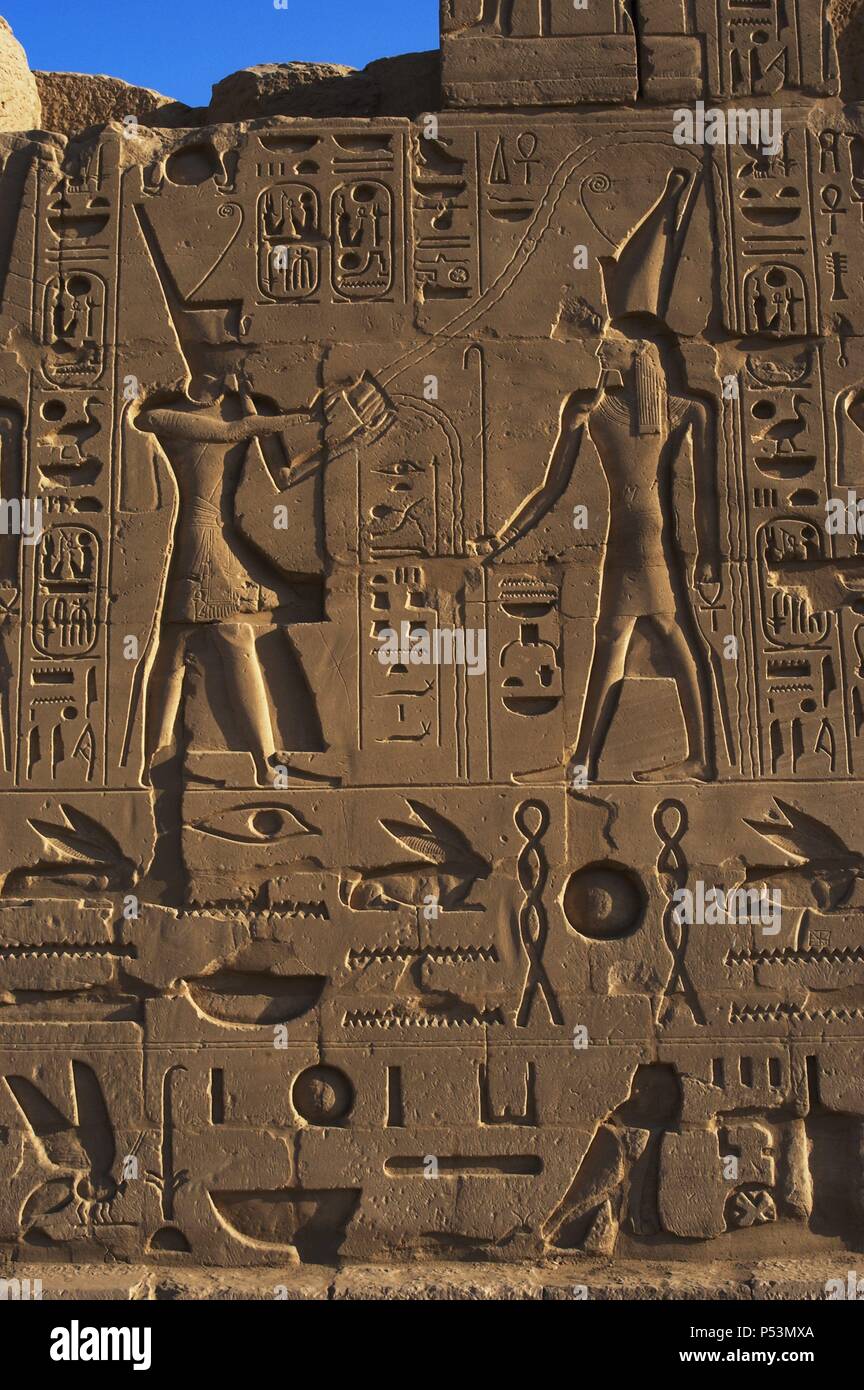 Egyptian Art. The Karnak Temple Complex. Relief depicting the Pharaoh Ramesses II, wearing the Deshret or Red Corwn, making an offering or libation before god Atum, with double crown or Pschent. 19th Dynasty. New Kingdom. Egypt. Stock Photohttps://www.alamy.com/image-license-details/?v=1https://www.alamy.com/egyptian-art-the-karnak-temple-complex-relief-depicting-the-pharaoh-ramesses-ii-wearing-the-deshret-or-red-corwn-making-an-offering-or-libation-before-god-atum-with-double-crown-or-pschent-19th-dynasty-new-kingdom-egypt-image209679970.html
Egyptian Art. The Karnak Temple Complex. Relief depicting the Pharaoh Ramesses II, wearing the Deshret or Red Corwn, making an offering or libation before god Atum, with double crown or Pschent. 19th Dynasty. New Kingdom. Egypt. Stock Photohttps://www.alamy.com/image-license-details/?v=1https://www.alamy.com/egyptian-art-the-karnak-temple-complex-relief-depicting-the-pharaoh-ramesses-ii-wearing-the-deshret-or-red-corwn-making-an-offering-or-libation-before-god-atum-with-double-crown-or-pschent-19th-dynasty-new-kingdom-egypt-image209679970.htmlRMP53MXA–Egyptian Art. The Karnak Temple Complex. Relief depicting the Pharaoh Ramesses II, wearing the Deshret or Red Corwn, making an offering or libation before god Atum, with double crown or Pschent. 19th Dynasty. New Kingdom. Egypt.
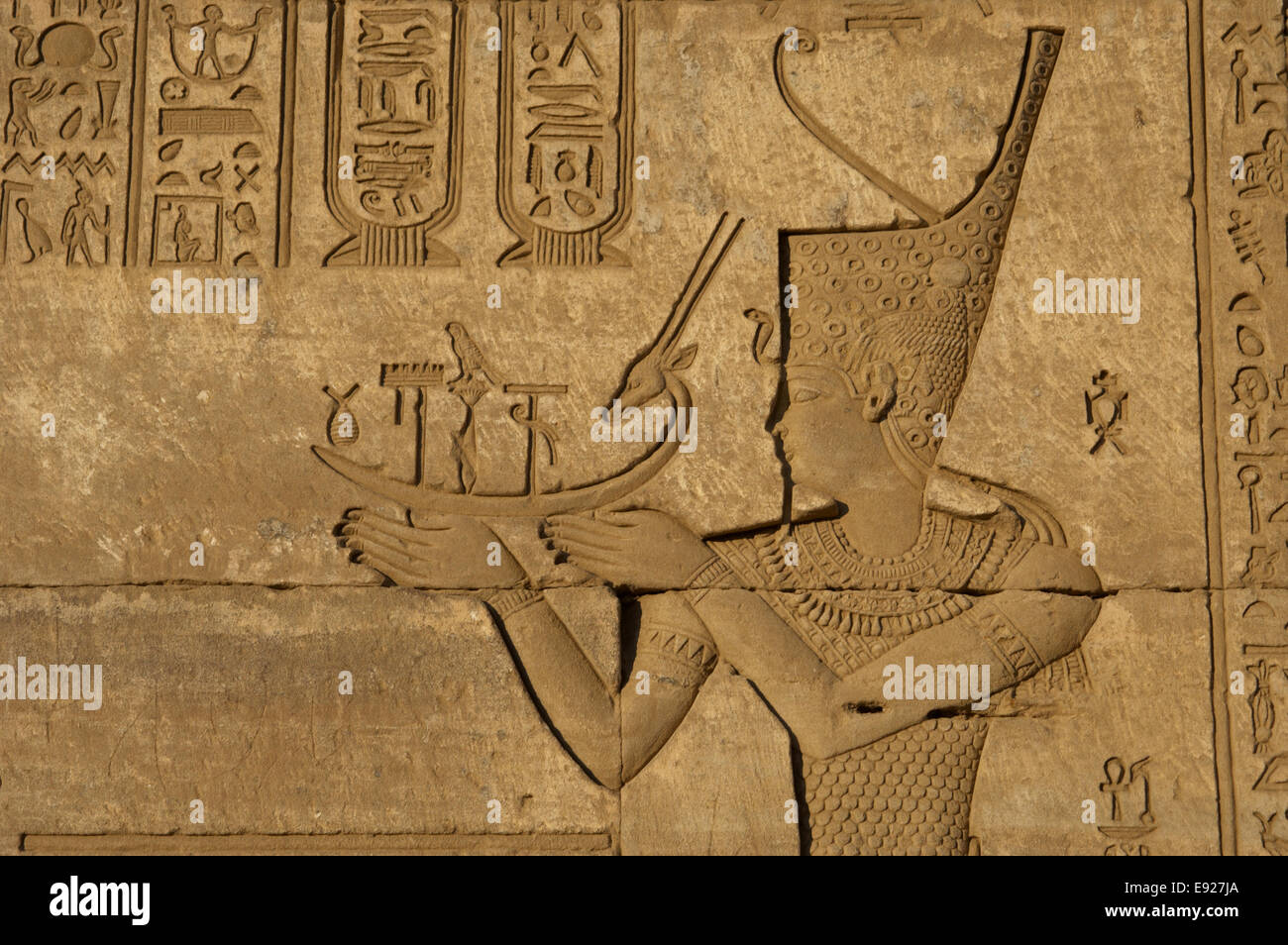 Egypt. Dendera. Temple complex. Roman Birth House of Mammisi. Emperor Trajan offers the Sokar-Hennu sacred boat. Relief. Stock Photohttps://www.alamy.com/image-license-details/?v=1https://www.alamy.com/stock-photo-egypt-dendera-temple-complex-roman-birth-house-of-mammisi-emperor-74423282.html
Egypt. Dendera. Temple complex. Roman Birth House of Mammisi. Emperor Trajan offers the Sokar-Hennu sacred boat. Relief. Stock Photohttps://www.alamy.com/image-license-details/?v=1https://www.alamy.com/stock-photo-egypt-dendera-temple-complex-roman-birth-house-of-mammisi-emperor-74423282.htmlRME927JA–Egypt. Dendera. Temple complex. Roman Birth House of Mammisi. Emperor Trajan offers the Sokar-Hennu sacred boat. Relief.
 Tomb of Amen Khopshef, son of Ramses III. Polychrome reliefs decorating the walls of the burial chamber. God Anubis on the right Stock Photohttps://www.alamy.com/image-license-details/?v=1https://www.alamy.com/stock-photo-tomb-of-amen-khopshef-son-of-ramses-iii-polychrome-reliefs-decorating-30499107.html
Tomb of Amen Khopshef, son of Ramses III. Polychrome reliefs decorating the walls of the burial chamber. God Anubis on the right Stock Photohttps://www.alamy.com/image-license-details/?v=1https://www.alamy.com/stock-photo-tomb-of-amen-khopshef-son-of-ramses-iii-polychrome-reliefs-decorating-30499107.htmlRMBNH9WR–Tomb of Amen Khopshef, son of Ramses III. Polychrome reliefs decorating the walls of the burial chamber. God Anubis on the right
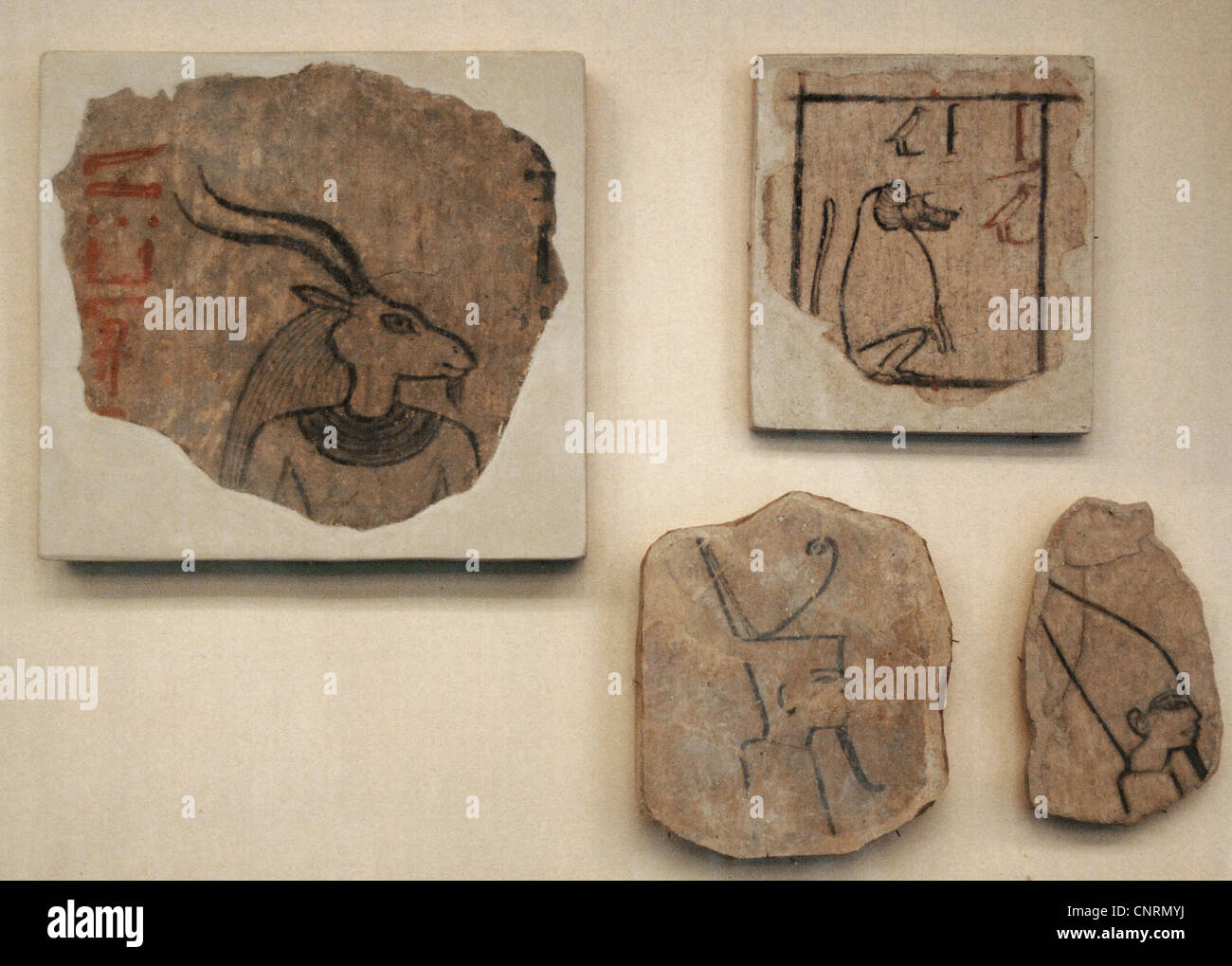 Fragments of wall decoration of the tomb of Amenhotep III. 1390-1352 BC. 18th Dynasty. New Kingdom. Tomb 22. Valley of the Kings Stock Photohttps://www.alamy.com/image-license-details/?v=1https://www.alamy.com/stock-photo-fragments-of-wall-decoration-of-the-tomb-of-amenhotep-iii-1390-1352-47849862.html
Fragments of wall decoration of the tomb of Amenhotep III. 1390-1352 BC. 18th Dynasty. New Kingdom. Tomb 22. Valley of the Kings Stock Photohttps://www.alamy.com/image-license-details/?v=1https://www.alamy.com/stock-photo-fragments-of-wall-decoration-of-the-tomb-of-amenhotep-iii-1390-1352-47849862.htmlRMCNRMYJ–Fragments of wall decoration of the tomb of Amenhotep III. 1390-1352 BC. 18th Dynasty. New Kingdom. Tomb 22. Valley of the Kings
 Egyptian Art. Stele of Herakleion-Thonis. The Naucratis decree (380 B.C.) of Nectanebo I. Martin Gropius. Berlin. Germany. Stock Photohttps://www.alamy.com/image-license-details/?v=1https://www.alamy.com/stock-photo-egyptian-art-stele-of-herakleion-thonis-the-naucratis-decree-380-bc-52836595.html
Egyptian Art. Stele of Herakleion-Thonis. The Naucratis decree (380 B.C.) of Nectanebo I. Martin Gropius. Berlin. Germany. Stock Photohttps://www.alamy.com/image-license-details/?v=1https://www.alamy.com/stock-photo-egyptian-art-stele-of-herakleion-thonis-the-naucratis-decree-380-bc-52836595.htmlRMD1XWH7–Egyptian Art. Stele of Herakleion-Thonis. The Naucratis decree (380 B.C.) of Nectanebo I. Martin Gropius. Berlin. Germany.
 Great Temple of Ramses II. Relief depicting the victorious pharaoh Ramses II with an enemy been captured. Abu Simbel. Egypt. Stock Photohttps://www.alamy.com/image-license-details/?v=1https://www.alamy.com/stock-photo-great-temple-of-ramses-ii-relief-depicting-the-victorious-pharaoh-39992517.html
Great Temple of Ramses II. Relief depicting the victorious pharaoh Ramses II with an enemy been captured. Abu Simbel. Egypt. Stock Photohttps://www.alamy.com/image-license-details/?v=1https://www.alamy.com/stock-photo-great-temple-of-ramses-ii-relief-depicting-the-victorious-pharaoh-39992517.htmlRMC91PT5–Great Temple of Ramses II. Relief depicting the victorious pharaoh Ramses II with an enemy been captured. Abu Simbel. Egypt.
 Relief of Roman emperor Trajan offering the Sokar barque to Hathor suckling her son and Ihy at the Roman birth-house of the Dendera Temple complex Stock Photohttps://www.alamy.com/image-license-details/?v=1https://www.alamy.com/relief-of-roman-emperor-trajan-offering-the-sokar-barque-to-hathor-suckling-her-son-and-ihy-at-the-roman-birth-house-of-the-dendera-temple-complex-image607670642.html
Relief of Roman emperor Trajan offering the Sokar barque to Hathor suckling her son and Ihy at the Roman birth-house of the Dendera Temple complex Stock Photohttps://www.alamy.com/image-license-details/?v=1https://www.alamy.com/relief-of-roman-emperor-trajan-offering-the-sokar-barque-to-hathor-suckling-her-son-and-ihy-at-the-roman-birth-house-of-the-dendera-temple-complex-image607670642.htmlRM2X8HP2X–Relief of Roman emperor Trajan offering the Sokar barque to Hathor suckling her son and Ihy at the Roman birth-house of the Dendera Temple complex
 Egypt. The Karnak Temple Complex. Relief depicting the Pharaoh Ramesses II making an offering or libation before god Atum. Stock Photohttps://www.alamy.com/image-license-details/?v=1https://www.alamy.com/stock-photo-egypt-the-karnak-temple-complex-relief-depicting-the-pharaoh-ramesses-70265838.html
Egypt. The Karnak Temple Complex. Relief depicting the Pharaoh Ramesses II making an offering or libation before god Atum. Stock Photohttps://www.alamy.com/image-license-details/?v=1https://www.alamy.com/stock-photo-egypt-the-karnak-temple-complex-relief-depicting-the-pharaoh-ramesses-70265838.htmlRME28TP6–Egypt. The Karnak Temple Complex. Relief depicting the Pharaoh Ramesses II making an offering or libation before god Atum.
 The Egyptian pharaoh Ramesses II offering flowers to the goddess Amunet at the Karnak Temple Complex in Luxor, Egypt Stock Photohttps://www.alamy.com/image-license-details/?v=1https://www.alamy.com/the-egyptian-pharaoh-ramesses-ii-offering-flowers-to-the-goddess-amunet-at-the-karnak-temple-complex-in-luxor-egypt-image605315821.html
The Egyptian pharaoh Ramesses II offering flowers to the goddess Amunet at the Karnak Temple Complex in Luxor, Egypt Stock Photohttps://www.alamy.com/image-license-details/?v=1https://www.alamy.com/the-egyptian-pharaoh-ramesses-ii-offering-flowers-to-the-goddess-amunet-at-the-karnak-temple-complex-in-luxor-egypt-image605315821.htmlRM2X4PEE5–The Egyptian pharaoh Ramesses II offering flowers to the goddess Amunet at the Karnak Temple Complex in Luxor, Egypt
 Cairo, Egyptian Museum, gold bracelet found in the tomb of the queen Ahhotep, the mother of Ahmosis, Dra Abu el Naga, Luxor. Coronation ritual. Stock Photohttps://www.alamy.com/image-license-details/?v=1https://www.alamy.com/cairo-egyptian-museum-gold-bracelet-found-in-the-tomb-of-the-queen-ahhotep-the-mother-of-ahmosis-dra-abu-el-naga-luxor-coronation-ritual-image401915419.html
Cairo, Egyptian Museum, gold bracelet found in the tomb of the queen Ahhotep, the mother of Ahmosis, Dra Abu el Naga, Luxor. Coronation ritual. Stock Photohttps://www.alamy.com/image-license-details/?v=1https://www.alamy.com/cairo-egyptian-museum-gold-bracelet-found-in-the-tomb-of-the-queen-ahhotep-the-mother-of-ahmosis-dra-abu-el-naga-luxor-coronation-ritual-image401915419.htmlRM2E9TR63–Cairo, Egyptian Museum, gold bracelet found in the tomb of the queen Ahhotep, the mother of Ahmosis, Dra Abu el Naga, Luxor. Coronation ritual.
 A relief inside the Temple of Seti I in Abydos, Egypt, showing pharaoh Seti I wearing the double crown (pschent) and the god of the afterlife Anubis Stock Photohttps://www.alamy.com/image-license-details/?v=1https://www.alamy.com/a-relief-inside-the-temple-of-seti-i-in-abydos-egypt-showing-pharaoh-seti-i-wearing-the-double-crown-pschent-and-the-god-of-the-afterlife-anubis-image607669061.html
A relief inside the Temple of Seti I in Abydos, Egypt, showing pharaoh Seti I wearing the double crown (pschent) and the god of the afterlife Anubis Stock Photohttps://www.alamy.com/image-license-details/?v=1https://www.alamy.com/a-relief-inside-the-temple-of-seti-i-in-abydos-egypt-showing-pharaoh-seti-i-wearing-the-double-crown-pschent-and-the-god-of-the-afterlife-anubis-image607669061.htmlRM2X8HM2D–A relief inside the Temple of Seti I in Abydos, Egypt, showing pharaoh Seti I wearing the double crown (pschent) and the god of the afterlife Anubis
 Egypt. Temple of Edfu. Ancient temple dedicated to Horus. Ptolemaic period. It was built during the reign of Ptolemy III and Ptolemy XII, 237-57 BC. Reliefs on the walls of the second hypostyle hall of the temple. Depiction of The Pharaoh wearing the Deshret (Red Crown) which confirmed the king as ruler of Lower Egypt. The Pharaoh making offerings to the God Hathor. Stock Photohttps://www.alamy.com/image-license-details/?v=1https://www.alamy.com/egypt-temple-of-edfu-ancient-temple-dedicated-to-horus-ptolemaic-period-it-was-built-during-the-reign-of-ptolemy-iii-and-ptolemy-xii-237-57-bc-reliefs-on-the-walls-of-the-second-hypostyle-hall-of-the-temple-depiction-of-the-pharaoh-wearing-the-deshret-red-crown-which-confirmed-the-king-as-ruler-of-lower-egypt-the-pharaoh-making-offerings-to-the-god-hathor-image220340443.html
Egypt. Temple of Edfu. Ancient temple dedicated to Horus. Ptolemaic period. It was built during the reign of Ptolemy III and Ptolemy XII, 237-57 BC. Reliefs on the walls of the second hypostyle hall of the temple. Depiction of The Pharaoh wearing the Deshret (Red Crown) which confirmed the king as ruler of Lower Egypt. The Pharaoh making offerings to the God Hathor. Stock Photohttps://www.alamy.com/image-license-details/?v=1https://www.alamy.com/egypt-temple-of-edfu-ancient-temple-dedicated-to-horus-ptolemaic-period-it-was-built-during-the-reign-of-ptolemy-iii-and-ptolemy-xii-237-57-bc-reliefs-on-the-walls-of-the-second-hypostyle-hall-of-the-temple-depiction-of-the-pharaoh-wearing-the-deshret-red-crown-which-confirmed-the-king-as-ruler-of-lower-egypt-the-pharaoh-making-offerings-to-the-god-hathor-image220340443.htmlRMPPDADF–Egypt. Temple of Edfu. Ancient temple dedicated to Horus. Ptolemaic period. It was built during the reign of Ptolemy III and Ptolemy XII, 237-57 BC. Reliefs on the walls of the second hypostyle hall of the temple. Depiction of The Pharaoh wearing the Deshret (Red Crown) which confirmed the king as ruler of Lower Egypt. The Pharaoh making offerings to the God Hathor.
 Egyptian Art. The Karnak Temple Complex. Relief depicting the Pharaoh Ramesses II making an offering to the god Ptah. Stock Photohttps://www.alamy.com/image-license-details/?v=1https://www.alamy.com/stock-photo-egyptian-art-the-karnak-temple-complex-relief-depicting-the-pharaoh-70092447.html
Egyptian Art. The Karnak Temple Complex. Relief depicting the Pharaoh Ramesses II making an offering to the god Ptah. Stock Photohttps://www.alamy.com/image-license-details/?v=1https://www.alamy.com/stock-photo-egyptian-art-the-karnak-temple-complex-relief-depicting-the-pharaoh-70092447.htmlRME20YHK–Egyptian Art. The Karnak Temple Complex. Relief depicting the Pharaoh Ramesses II making an offering to the god Ptah.
 Relief depicting a scene from the King's Heb Sed. Monumental gateway from the Palace of Apries, Memphis, Egypt. Limestone. Stock Photohttps://www.alamy.com/image-license-details/?v=1https://www.alamy.com/stock-photo-relief-depicting-a-scene-from-the-kings-heb-sed-monumental-gateway-51210300.html
Relief depicting a scene from the King's Heb Sed. Monumental gateway from the Palace of Apries, Memphis, Egypt. Limestone. Stock Photohttps://www.alamy.com/image-license-details/?v=1https://www.alamy.com/stock-photo-relief-depicting-a-scene-from-the-kings-heb-sed-monumental-gateway-51210300.htmlRMCY8R78–Relief depicting a scene from the King's Heb Sed. Monumental gateway from the Palace of Apries, Memphis, Egypt. Limestone.
 Amulet of a crown of Lower Egypt. Dimensions: H. 1.8 × W. 1.1 × T. 0.6 cm (11/16 × 7/16 × 1/4 in.). Date: 664-30 BC. This amulet takes the form of the crown of Lower Egypt, the northern part of the country. Called <i>deshret</i> by the ancient Egyptians, It is a cylindrical headpiece with a tall spike at the back and a long sprial in front. It has been nicknamed the 'red crown,' since many depictions in art are colored red. However, amuletic versions are most often green, like this example. The <i>deshret</i> is also a hieroglyph representing the letter 'n.'. Museum: Metropolitan Museum of Ar Stock Photohttps://www.alamy.com/image-license-details/?v=1https://www.alamy.com/amulet-of-a-crown-of-lower-egypt-dimensions-h-18-w-11-t-06-cm-1116-716-14-in-date-664-30-bc-this-amulet-takes-the-form-of-the-crown-of-lower-egypt-the-northern-part-of-the-country-called-ideshreti-by-the-ancient-egyptians-it-is-a-cylindrical-headpiece-with-a-tall-spike-at-the-back-and-a-long-sprial-in-front-it-has-been-nicknamed-the-red-crown-since-many-depictions-in-art-are-colored-red-however-amuletic-versions-are-most-often-green-like-this-example-the-ideshreti-is-also-a-hieroglyph-representing-the-letter-n-museum-metropolitan-museum-of-ar-image213181139.html
Amulet of a crown of Lower Egypt. Dimensions: H. 1.8 × W. 1.1 × T. 0.6 cm (11/16 × 7/16 × 1/4 in.). Date: 664-30 BC. This amulet takes the form of the crown of Lower Egypt, the northern part of the country. Called <i>deshret</i> by the ancient Egyptians, It is a cylindrical headpiece with a tall spike at the back and a long sprial in front. It has been nicknamed the 'red crown,' since many depictions in art are colored red. However, amuletic versions are most often green, like this example. The <i>deshret</i> is also a hieroglyph representing the letter 'n.'. Museum: Metropolitan Museum of Ar Stock Photohttps://www.alamy.com/image-license-details/?v=1https://www.alamy.com/amulet-of-a-crown-of-lower-egypt-dimensions-h-18-w-11-t-06-cm-1116-716-14-in-date-664-30-bc-this-amulet-takes-the-form-of-the-crown-of-lower-egypt-the-northern-part-of-the-country-called-ideshreti-by-the-ancient-egyptians-it-is-a-cylindrical-headpiece-with-a-tall-spike-at-the-back-and-a-long-sprial-in-front-it-has-been-nicknamed-the-red-crown-since-many-depictions-in-art-are-colored-red-however-amuletic-versions-are-most-often-green-like-this-example-the-ideshreti-is-also-a-hieroglyph-representing-the-letter-n-museum-metropolitan-museum-of-ar-image213181139.htmlRMPAR6M3–Amulet of a crown of Lower Egypt. Dimensions: H. 1.8 × W. 1.1 × T. 0.6 cm (11/16 × 7/16 × 1/4 in.). Date: 664-30 BC. This amulet takes the form of the crown of Lower Egypt, the northern part of the country. Called <i>deshret</i> by the ancient Egyptians, It is a cylindrical headpiece with a tall spike at the back and a long sprial in front. It has been nicknamed the 'red crown,' since many depictions in art are colored red. However, amuletic versions are most often green, like this example. The <i>deshret</i> is also a hieroglyph representing the letter 'n.'. Museum: Metropolitan Museum of Ar
 Relief depicting a scene from the King's Heb Sed. Monumental gateway from the Palace of Apries, Memphis, Egypt. Limestone. Stock Photohttps://www.alamy.com/image-license-details/?v=1https://www.alamy.com/stock-photo-relief-depicting-a-scene-from-the-kings-heb-sed-monumental-gateway-51210262.html
Relief depicting a scene from the King's Heb Sed. Monumental gateway from the Palace of Apries, Memphis, Egypt. Limestone. Stock Photohttps://www.alamy.com/image-license-details/?v=1https://www.alamy.com/stock-photo-relief-depicting-a-scene-from-the-kings-heb-sed-monumental-gateway-51210262.htmlRMCY8R5X–Relief depicting a scene from the King's Heb Sed. Monumental gateway from the Palace of Apries, Memphis, Egypt. Limestone.
 Carinated Stone Jar with Rope Pattern. Dimensions: H. 16.7 cm (6 9/16 in); diam. 18.7 cm (7 3/8 in) Diam. of lid 9.9 cm (3 7/8 in). Dynasty: Dynasty 18, early. Date: ca. 1550-1458 B.C.. This limestone vessel with its baggy shape and sharp carination of the lower body is a traditional Egyptian shape called the deshret-jar. The form is common in pottery found in burials from the Old Kingdom onward. A raised band with carved diagonal lines imitating a twisted cord decorates the base of the neck. The vessel was deposited in the lowest chamber of a pit tomb cut into the forecourt of a reused Midd Stock Photohttps://www.alamy.com/image-license-details/?v=1https://www.alamy.com/carinated-stone-jar-with-rope-pattern-dimensions-h-167-cm-6-916-in-diam-187-cm-7-38-in-diam-of-lid-99-cm-3-78-in-dynasty-dynasty-18-early-date-ca-1550-1458-bc-this-limestone-vessel-with-its-baggy-shape-and-sharp-carination-of-the-lower-body-is-a-traditional-egyptian-shape-called-the-deshret-jar-the-form-is-common-in-pottery-found-in-burials-from-the-old-kingdom-onward-a-raised-band-with-carved-diagonal-lines-imitating-a-twisted-cord-decorates-the-base-of-the-neck-the-vessel-was-deposited-in-the-lowest-chamber-of-a-pit-tomb-cut-into-the-forecourt-of-a-reused-midd-image212875751.html
Carinated Stone Jar with Rope Pattern. Dimensions: H. 16.7 cm (6 9/16 in); diam. 18.7 cm (7 3/8 in) Diam. of lid 9.9 cm (3 7/8 in). Dynasty: Dynasty 18, early. Date: ca. 1550-1458 B.C.. This limestone vessel with its baggy shape and sharp carination of the lower body is a traditional Egyptian shape called the deshret-jar. The form is common in pottery found in burials from the Old Kingdom onward. A raised band with carved diagonal lines imitating a twisted cord decorates the base of the neck. The vessel was deposited in the lowest chamber of a pit tomb cut into the forecourt of a reused Midd Stock Photohttps://www.alamy.com/image-license-details/?v=1https://www.alamy.com/carinated-stone-jar-with-rope-pattern-dimensions-h-167-cm-6-916-in-diam-187-cm-7-38-in-diam-of-lid-99-cm-3-78-in-dynasty-dynasty-18-early-date-ca-1550-1458-bc-this-limestone-vessel-with-its-baggy-shape-and-sharp-carination-of-the-lower-body-is-a-traditional-egyptian-shape-called-the-deshret-jar-the-form-is-common-in-pottery-found-in-burials-from-the-old-kingdom-onward-a-raised-band-with-carved-diagonal-lines-imitating-a-twisted-cord-decorates-the-base-of-the-neck-the-vessel-was-deposited-in-the-lowest-chamber-of-a-pit-tomb-cut-into-the-forecourt-of-a-reused-midd-image212875751.htmlRMPA995B–Carinated Stone Jar with Rope Pattern. Dimensions: H. 16.7 cm (6 9/16 in); diam. 18.7 cm (7 3/8 in) Diam. of lid 9.9 cm (3 7/8 in). Dynasty: Dynasty 18, early. Date: ca. 1550-1458 B.C.. This limestone vessel with its baggy shape and sharp carination of the lower body is a traditional Egyptian shape called the deshret-jar. The form is common in pottery found in burials from the Old Kingdom onward. A raised band with carved diagonal lines imitating a twisted cord decorates the base of the neck. The vessel was deposited in the lowest chamber of a pit tomb cut into the forecourt of a reused Midd
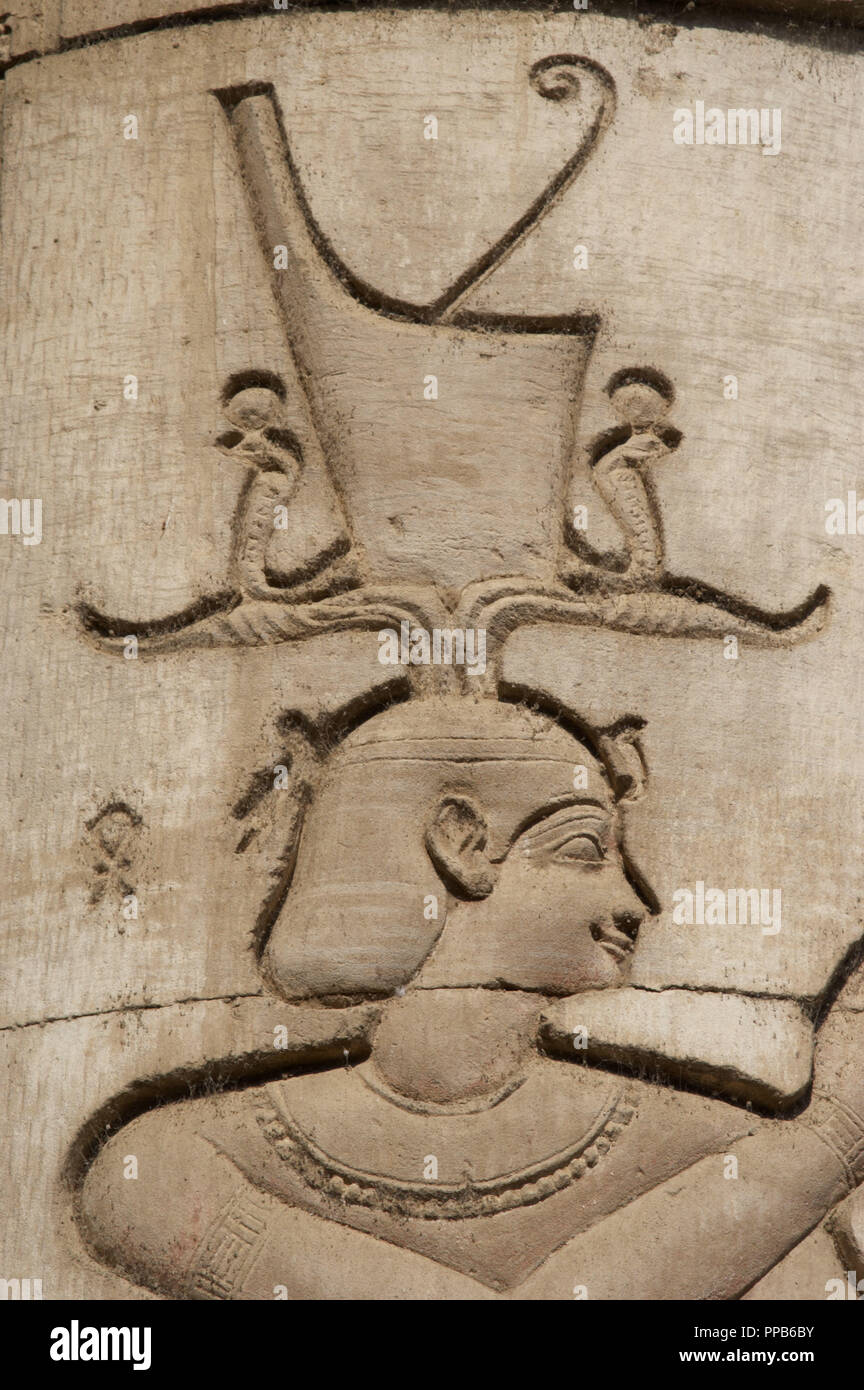 Egyptian Art. Temple of Kom Ombo. Ptolemaic Dynasty. 2nd century B.C. Dedicated to the crocodile god Sobek and falcon god Haroeris. Pharaoh offering wearing Red Crown. Relief. Stock Photohttps://www.alamy.com/image-license-details/?v=1https://www.alamy.com/egyptian-art-temple-of-kom-ombo-ptolemaic-dynasty-2nd-century-bc-dedicated-to-the-crocodile-god-sobek-and-falcon-god-haroeris-pharaoh-offering-wearing-red-crown-relief-image220293359.html
Egyptian Art. Temple of Kom Ombo. Ptolemaic Dynasty. 2nd century B.C. Dedicated to the crocodile god Sobek and falcon god Haroeris. Pharaoh offering wearing Red Crown. Relief. Stock Photohttps://www.alamy.com/image-license-details/?v=1https://www.alamy.com/egyptian-art-temple-of-kom-ombo-ptolemaic-dynasty-2nd-century-bc-dedicated-to-the-crocodile-god-sobek-and-falcon-god-haroeris-pharaoh-offering-wearing-red-crown-relief-image220293359.htmlRMPPB6BY–Egyptian Art. Temple of Kom Ombo. Ptolemaic Dynasty. 2nd century B.C. Dedicated to the crocodile god Sobek and falcon god Haroeris. Pharaoh offering wearing Red Crown. Relief.
 Egyptian Art. Temple of Seti I at Abydos. Relief depicting the pharaoh Ramesses II lassoing a bull with his father Seti I behind him. 19th Dynasty. New Kingdom. Stock Photohttps://www.alamy.com/image-license-details/?v=1https://www.alamy.com/egyptian-art-temple-of-seti-i-at-abydos-relief-depicting-the-pharaoh-ramesses-ii-lassoing-a-bull-with-his-father-seti-i-behind-him-19th-dynasty-new-kingdom-image209567759.html
Egyptian Art. Temple of Seti I at Abydos. Relief depicting the pharaoh Ramesses II lassoing a bull with his father Seti I behind him. 19th Dynasty. New Kingdom. Stock Photohttps://www.alamy.com/image-license-details/?v=1https://www.alamy.com/egyptian-art-temple-of-seti-i-at-abydos-relief-depicting-the-pharaoh-ramesses-ii-lassoing-a-bull-with-his-father-seti-i-behind-him-19th-dynasty-new-kingdom-image209567759.htmlRMP4XHPR–Egyptian Art. Temple of Seti I at Abydos. Relief depicting the pharaoh Ramesses II lassoing a bull with his father Seti I behind him. 19th Dynasty. New Kingdom.
 Egypt. Dendera. Temple complex. Roman Birth House of Mammisi. Emperor Trajan, depicted as a pharaoh wearing the red crown, offers the Sokar-Hennu sacred boat. Relief. Third Intercolumnar wall. South face. Stock Photohttps://www.alamy.com/image-license-details/?v=1https://www.alamy.com/egypt-dendera-temple-complex-roman-birth-house-of-mammisi-emperor-trajan-depicted-as-a-pharaoh-wearing-the-red-crown-offers-the-sokar-hennu-sacred-boat-relief-third-intercolumnar-wall-south-face-image209621192.html
Egypt. Dendera. Temple complex. Roman Birth House of Mammisi. Emperor Trajan, depicted as a pharaoh wearing the red crown, offers the Sokar-Hennu sacred boat. Relief. Third Intercolumnar wall. South face. Stock Photohttps://www.alamy.com/image-license-details/?v=1https://www.alamy.com/egypt-dendera-temple-complex-roman-birth-house-of-mammisi-emperor-trajan-depicted-as-a-pharaoh-wearing-the-red-crown-offers-the-sokar-hennu-sacred-boat-relief-third-intercolumnar-wall-south-face-image209621192.htmlRMP511Y4–Egypt. Dendera. Temple complex. Roman Birth House of Mammisi. Emperor Trajan, depicted as a pharaoh wearing the red crown, offers the Sokar-Hennu sacred boat. Relief. Third Intercolumnar wall. South face.
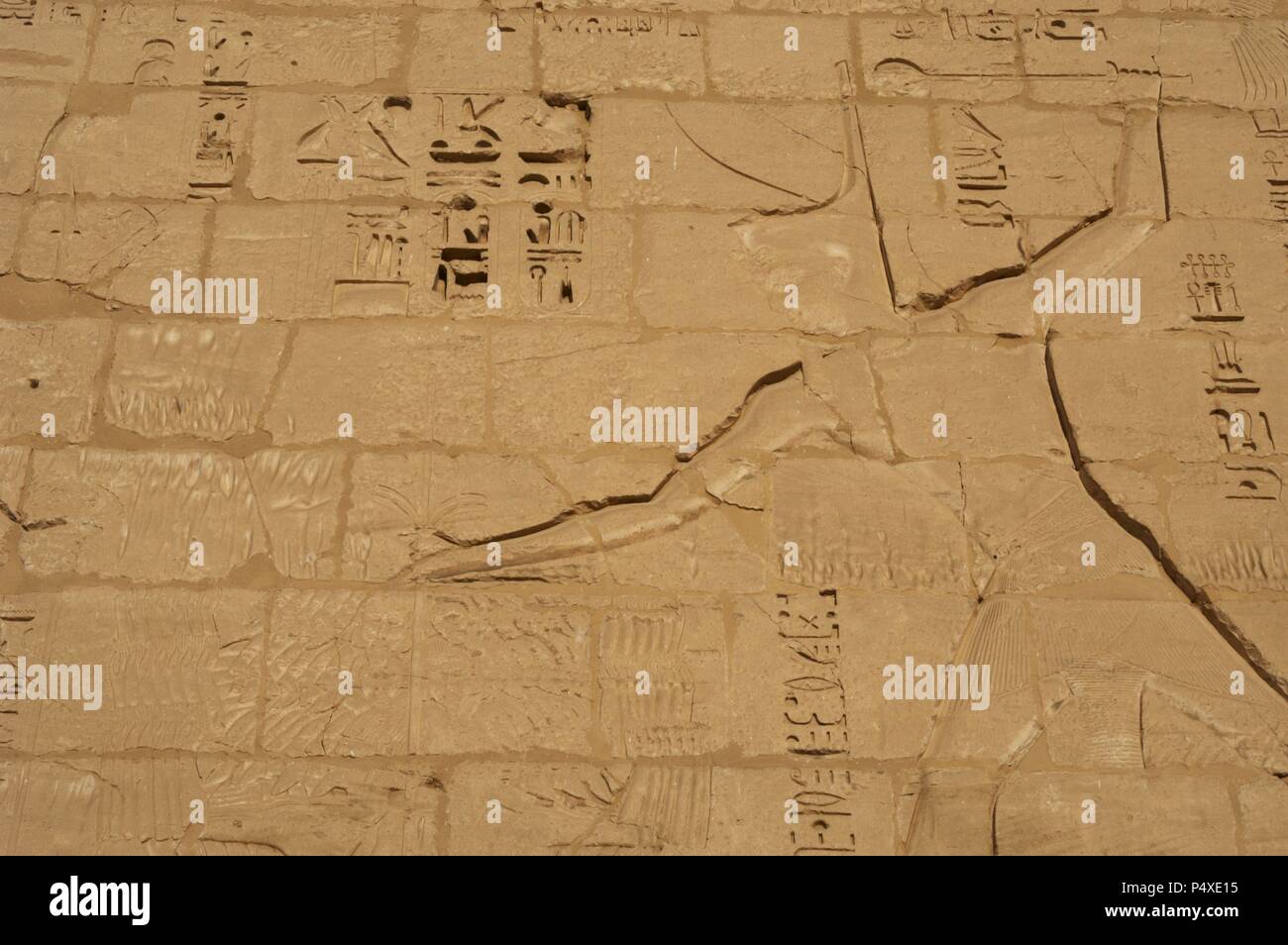 Temple of Ramses III. Relief depicting Ramses III capturing his enemies before Ra-Horajti. Detail of the pharaoh. First pylon of the temple. New Kingdom. (1550-1069 b.C). Twentieth dynasty. Thebes. Medinet-Habou. Egypt. Stock Photohttps://www.alamy.com/image-license-details/?v=1https://www.alamy.com/temple-of-ramses-iii-relief-depicting-ramses-iii-capturing-his-enemies-before-ra-horajti-detail-of-the-pharaoh-first-pylon-of-the-temple-new-kingdom-1550-1069-bc-twentieth-dynasty-thebes-medinet-habou-egypt-image209564801.html
Temple of Ramses III. Relief depicting Ramses III capturing his enemies before Ra-Horajti. Detail of the pharaoh. First pylon of the temple. New Kingdom. (1550-1069 b.C). Twentieth dynasty. Thebes. Medinet-Habou. Egypt. Stock Photohttps://www.alamy.com/image-license-details/?v=1https://www.alamy.com/temple-of-ramses-iii-relief-depicting-ramses-iii-capturing-his-enemies-before-ra-horajti-detail-of-the-pharaoh-first-pylon-of-the-temple-new-kingdom-1550-1069-bc-twentieth-dynasty-thebes-medinet-habou-egypt-image209564801.htmlRMP4XE15–Temple of Ramses III. Relief depicting Ramses III capturing his enemies before Ra-Horajti. Detail of the pharaoh. First pylon of the temple. New Kingdom. (1550-1069 b.C). Twentieth dynasty. Thebes. Medinet-Habou. Egypt.
 Fragments of wall decoration of the tomb of Amenhotep III. 1390-1352 BC. 18th Dynasty. New Kingdom. Tomb 22. Valley of the Kings. British Museum. London. United Kingdom. Stock Photohttps://www.alamy.com/image-license-details/?v=1https://www.alamy.com/fragments-of-wall-decoration-of-the-tomb-of-amenhotep-iii-1390-1352-bc-18th-dynasty-new-kingdom-tomb-22-valley-of-the-kings-british-museum-london-united-kingdom-image209680669.html
Fragments of wall decoration of the tomb of Amenhotep III. 1390-1352 BC. 18th Dynasty. New Kingdom. Tomb 22. Valley of the Kings. British Museum. London. United Kingdom. Stock Photohttps://www.alamy.com/image-license-details/?v=1https://www.alamy.com/fragments-of-wall-decoration-of-the-tomb-of-amenhotep-iii-1390-1352-bc-18th-dynasty-new-kingdom-tomb-22-valley-of-the-kings-british-museum-london-united-kingdom-image209680669.htmlRMP53NR9–Fragments of wall decoration of the tomb of Amenhotep III. 1390-1352 BC. 18th Dynasty. New Kingdom. Tomb 22. Valley of the Kings. British Museum. London. United Kingdom.
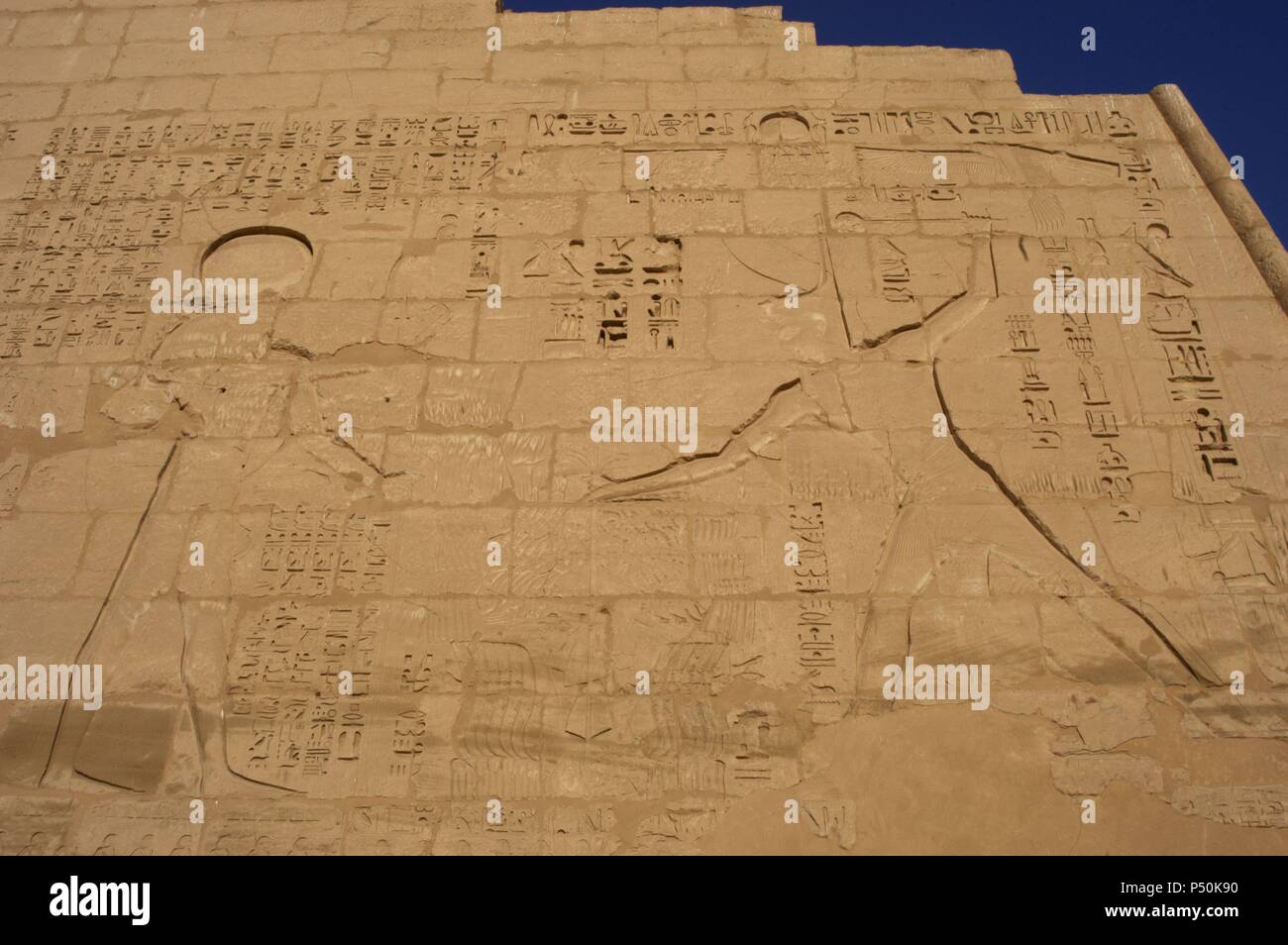 Temple of Ramses III. Relief depicting Ramses III capturing his enemies before Ra-Horajti. First pylon of the temple. New Kingdom. (1550-1069 b.C). Twentieth dynasty. Thebes. Medinet-Habou. Egypt. Stock Photohttps://www.alamy.com/image-license-details/?v=1https://www.alamy.com/temple-of-ramses-iii-relief-depicting-ramses-iii-capturing-his-enemies-before-ra-horajti-first-pylon-of-the-temple-new-kingdom-1550-1069-bc-twentieth-dynasty-thebes-medinet-habou-egypt-image209612844.html
Temple of Ramses III. Relief depicting Ramses III capturing his enemies before Ra-Horajti. First pylon of the temple. New Kingdom. (1550-1069 b.C). Twentieth dynasty. Thebes. Medinet-Habou. Egypt. Stock Photohttps://www.alamy.com/image-license-details/?v=1https://www.alamy.com/temple-of-ramses-iii-relief-depicting-ramses-iii-capturing-his-enemies-before-ra-horajti-first-pylon-of-the-temple-new-kingdom-1550-1069-bc-twentieth-dynasty-thebes-medinet-habou-egypt-image209612844.htmlRMP50K90–Temple of Ramses III. Relief depicting Ramses III capturing his enemies before Ra-Horajti. First pylon of the temple. New Kingdom. (1550-1069 b.C). Twentieth dynasty. Thebes. Medinet-Habou. Egypt.
 Tomb of Amen Khopshef, son of Ramses III. Polychrome reliefs decorating the walls of the burial chamber. God Anubis on the right. Twentieth dynasty. New Kingdom. Valley of the Queens. Egypt. Stock Photohttps://www.alamy.com/image-license-details/?v=1https://www.alamy.com/tomb-of-amen-khopshef-son-of-ramses-iii-polychrome-reliefs-decorating-the-walls-of-the-burial-chamber-god-anubis-on-the-right-twentieth-dynasty-new-kingdom-valley-of-the-queens-egypt-image209612924.html
Tomb of Amen Khopshef, son of Ramses III. Polychrome reliefs decorating the walls of the burial chamber. God Anubis on the right. Twentieth dynasty. New Kingdom. Valley of the Queens. Egypt. Stock Photohttps://www.alamy.com/image-license-details/?v=1https://www.alamy.com/tomb-of-amen-khopshef-son-of-ramses-iii-polychrome-reliefs-decorating-the-walls-of-the-burial-chamber-god-anubis-on-the-right-twentieth-dynasty-new-kingdom-valley-of-the-queens-egypt-image209612924.htmlRMP50KBT–Tomb of Amen Khopshef, son of Ramses III. Polychrome reliefs decorating the walls of the burial chamber. God Anubis on the right. Twentieth dynasty. New Kingdom. Valley of the Queens. Egypt.
 Egyptian art. Great Temple of Ramses II. 19th Dynasty. Relief depicting the victorious pharaoh Ramses II with an enemy been captured. 19th Dynasty. New Kingdom. Abu Simbel. Egypt. Stock Photohttps://www.alamy.com/image-license-details/?v=1https://www.alamy.com/egyptian-art-great-temple-of-ramses-ii-19th-dynasty-relief-depicting-the-victorious-pharaoh-ramses-ii-with-an-enemy-been-captured-19th-dynasty-new-kingdom-abu-simbel-egypt-image220340961.html
Egyptian art. Great Temple of Ramses II. 19th Dynasty. Relief depicting the victorious pharaoh Ramses II with an enemy been captured. 19th Dynasty. New Kingdom. Abu Simbel. Egypt. Stock Photohttps://www.alamy.com/image-license-details/?v=1https://www.alamy.com/egyptian-art-great-temple-of-ramses-ii-19th-dynasty-relief-depicting-the-victorious-pharaoh-ramses-ii-with-an-enemy-been-captured-19th-dynasty-new-kingdom-abu-simbel-egypt-image220340961.htmlRMPPDB41–Egyptian art. Great Temple of Ramses II. 19th Dynasty. Relief depicting the victorious pharaoh Ramses II with an enemy been captured. 19th Dynasty. New Kingdom. Abu Simbel. Egypt.
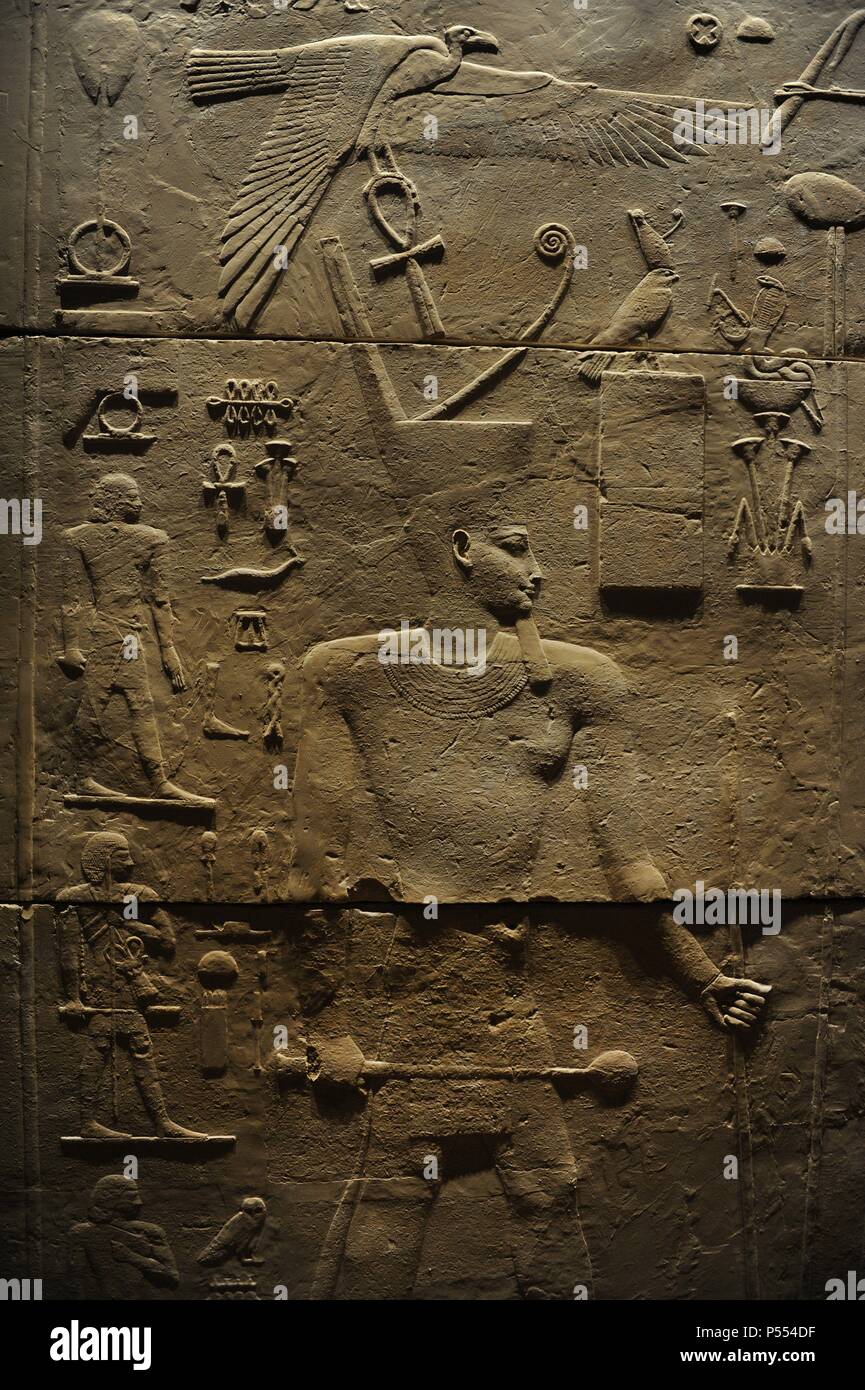 Relief depicting a scene from the King's Heb Sed. Monumental gateway from the Palace of Apries, Memphis, Egypt. Limestone. Late Period, Saite. 26th Dynasty. C. 589-570 BC. Ny Carlsberg Glyptotek Museum. Copenhagen. Denmark. Stock Photohttps://www.alamy.com/image-license-details/?v=1https://www.alamy.com/relief-depicting-a-scene-from-the-kings-heb-sed-monumental-gateway-from-the-palace-of-apries-memphis-egypt-limestone-late-period-saite-26th-dynasty-c-589-570-bc-ny-carlsberg-glyptotek-museum-copenhagen-denmark-image209710971.html
Relief depicting a scene from the King's Heb Sed. Monumental gateway from the Palace of Apries, Memphis, Egypt. Limestone. Late Period, Saite. 26th Dynasty. C. 589-570 BC. Ny Carlsberg Glyptotek Museum. Copenhagen. Denmark. Stock Photohttps://www.alamy.com/image-license-details/?v=1https://www.alamy.com/relief-depicting-a-scene-from-the-kings-heb-sed-monumental-gateway-from-the-palace-of-apries-memphis-egypt-limestone-late-period-saite-26th-dynasty-c-589-570-bc-ny-carlsberg-glyptotek-museum-copenhagen-denmark-image209710971.htmlRMP554DF–Relief depicting a scene from the King's Heb Sed. Monumental gateway from the Palace of Apries, Memphis, Egypt. Limestone. Late Period, Saite. 26th Dynasty. C. 589-570 BC. Ny Carlsberg Glyptotek Museum. Copenhagen. Denmark.
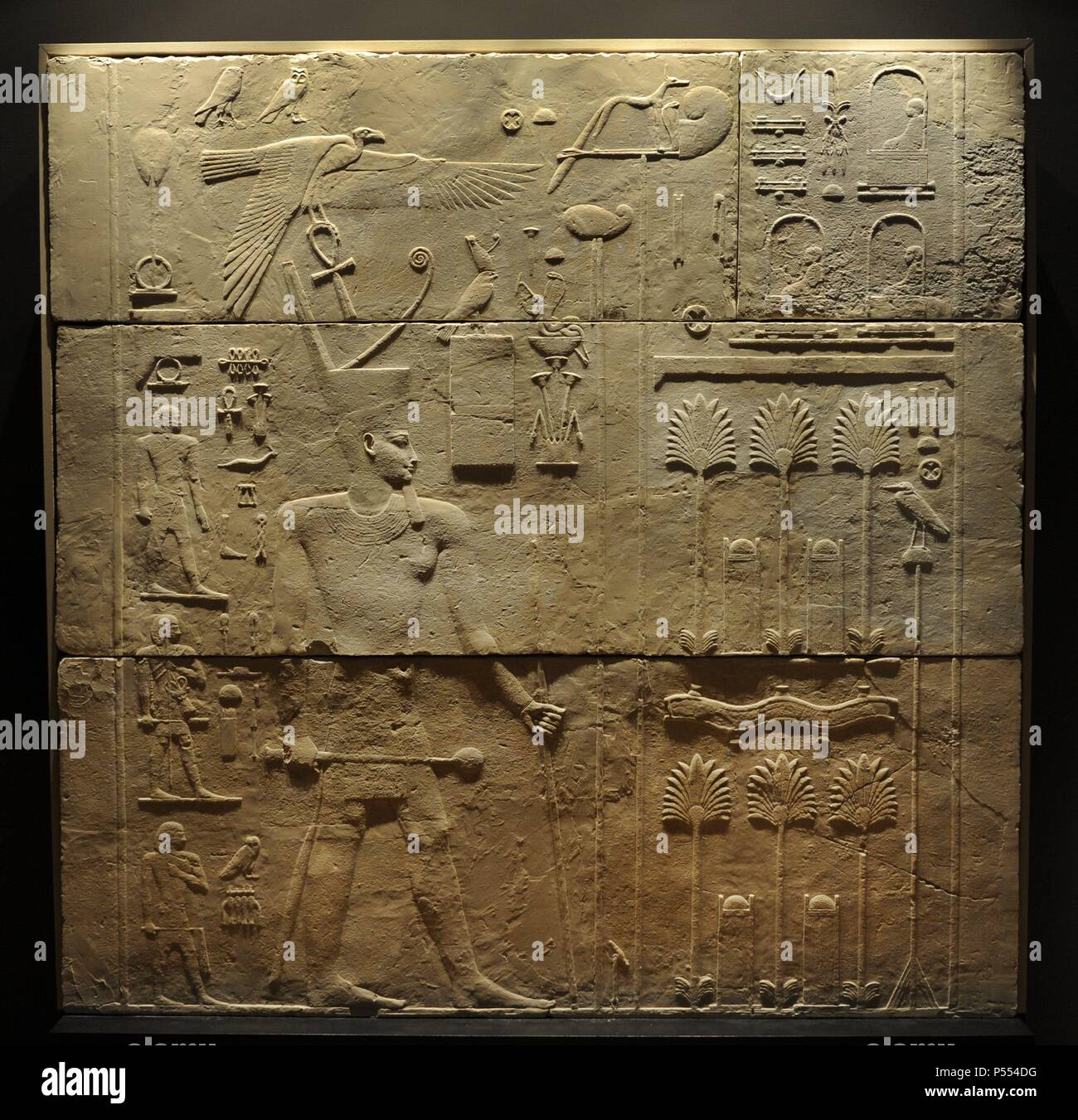 Relief depicting a scene from the King's Heb Sed. Monumental gateway from the Palace of Apries, Memphis, Egypt. Limestone. Late Period, Saite. 26th Dynasty. C. 589-570 BC. Ny Carlsberg Glyptotek Museum. Copenhagen. Denmark. Stock Photohttps://www.alamy.com/image-license-details/?v=1https://www.alamy.com/relief-depicting-a-scene-from-the-kings-heb-sed-monumental-gateway-from-the-palace-of-apries-memphis-egypt-limestone-late-period-saite-26th-dynasty-c-589-570-bc-ny-carlsberg-glyptotek-museum-copenhagen-denmark-image209710972.html
Relief depicting a scene from the King's Heb Sed. Monumental gateway from the Palace of Apries, Memphis, Egypt. Limestone. Late Period, Saite. 26th Dynasty. C. 589-570 BC. Ny Carlsberg Glyptotek Museum. Copenhagen. Denmark. Stock Photohttps://www.alamy.com/image-license-details/?v=1https://www.alamy.com/relief-depicting-a-scene-from-the-kings-heb-sed-monumental-gateway-from-the-palace-of-apries-memphis-egypt-limestone-late-period-saite-26th-dynasty-c-589-570-bc-ny-carlsberg-glyptotek-museum-copenhagen-denmark-image209710972.htmlRMP554DG–Relief depicting a scene from the King's Heb Sed. Monumental gateway from the Palace of Apries, Memphis, Egypt. Limestone. Late Period, Saite. 26th Dynasty. C. 589-570 BC. Ny Carlsberg Glyptotek Museum. Copenhagen. Denmark.